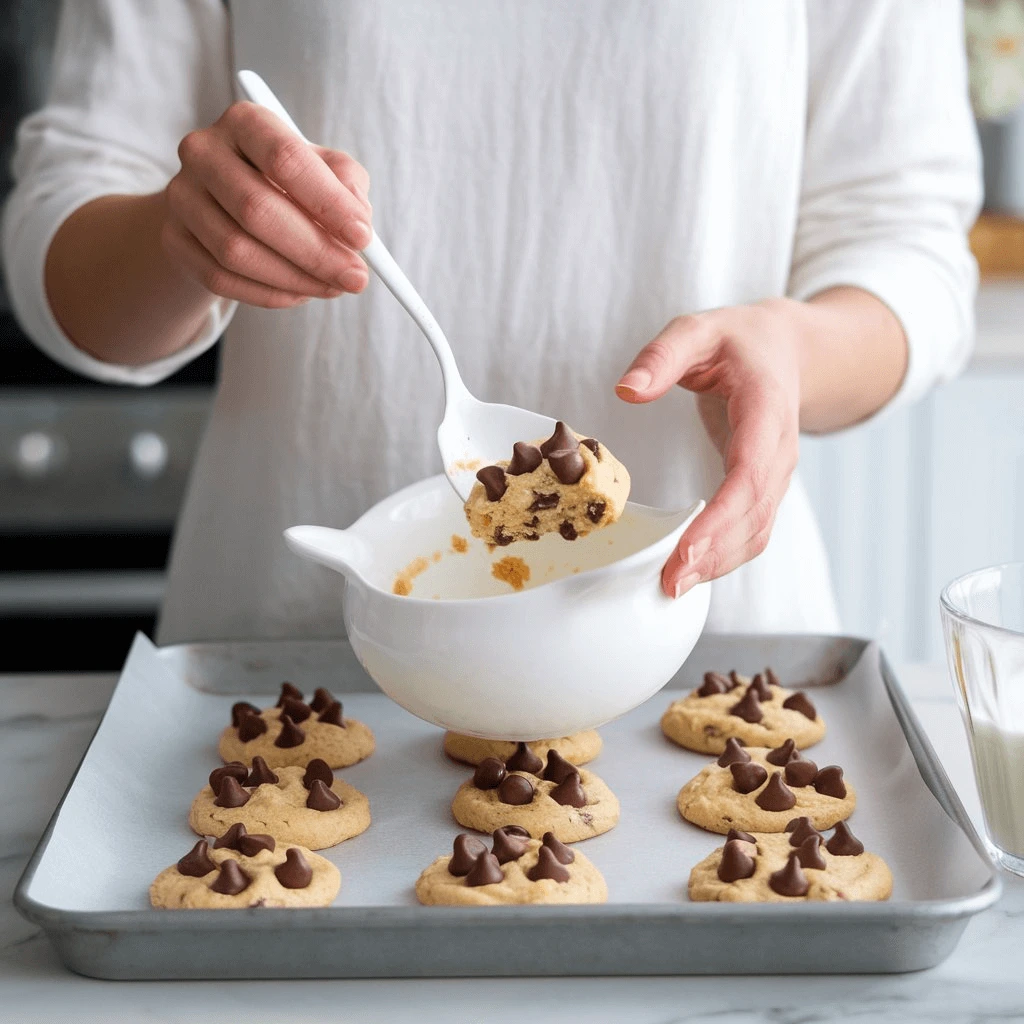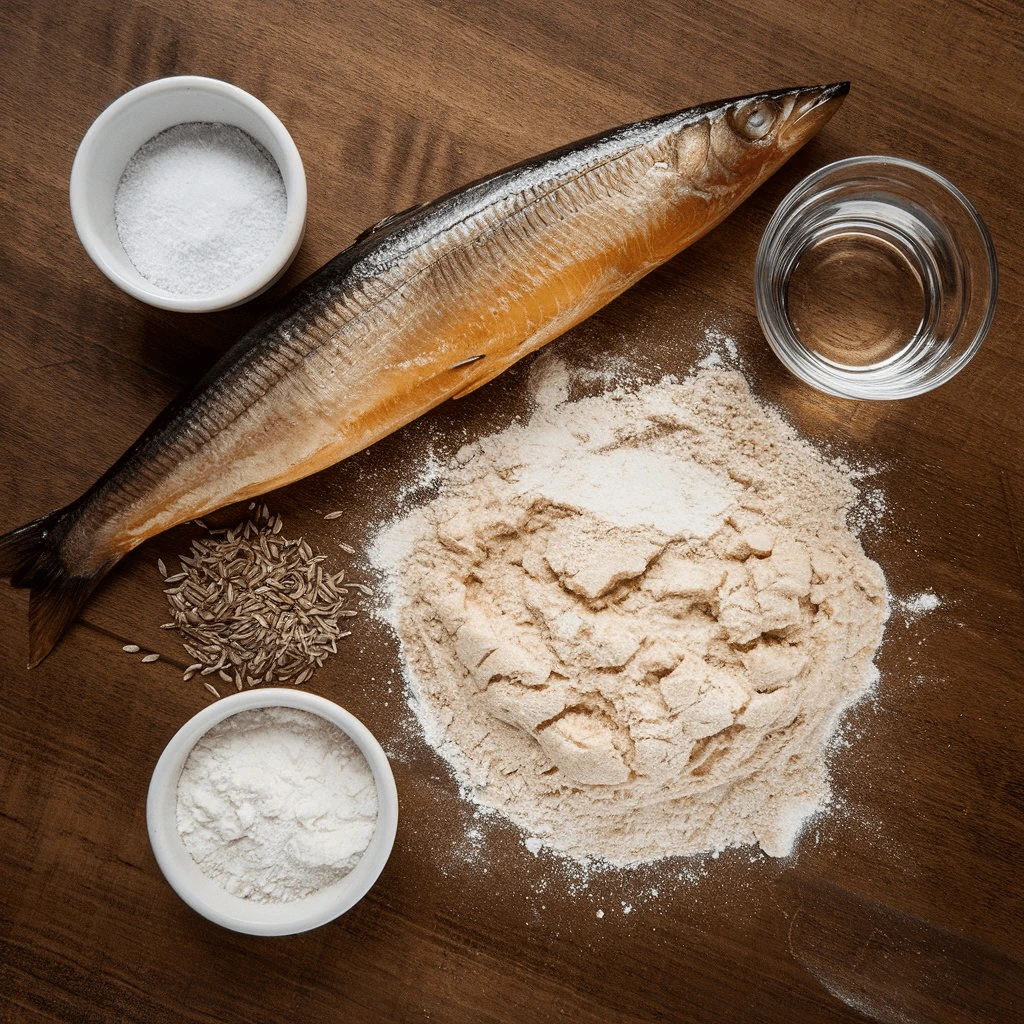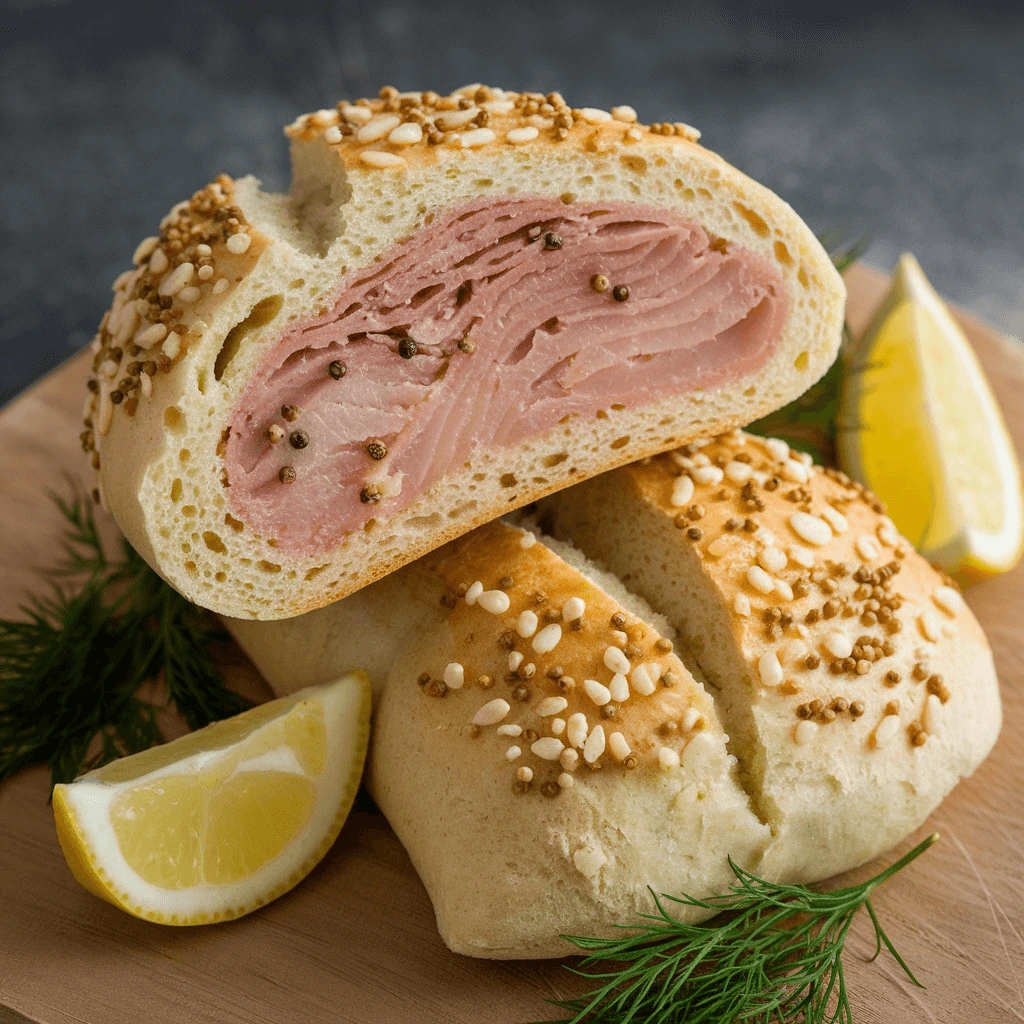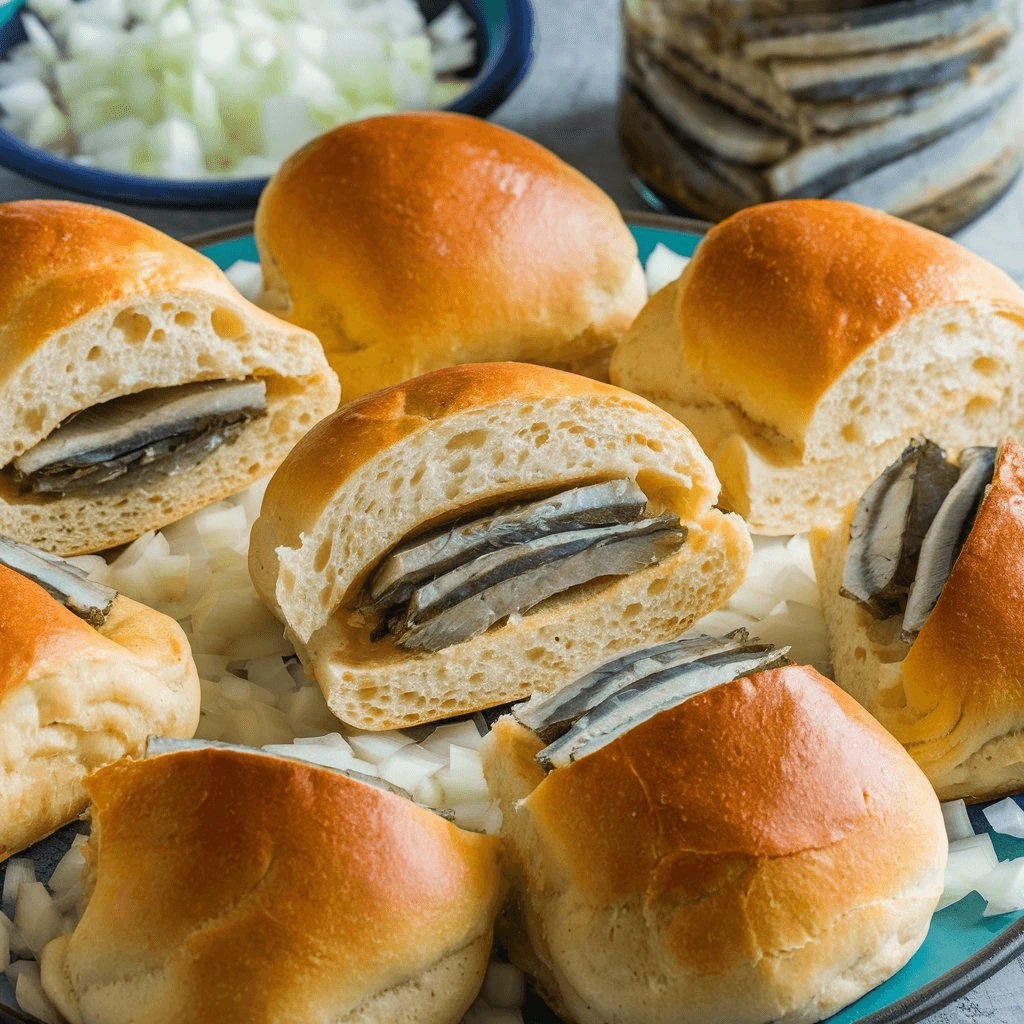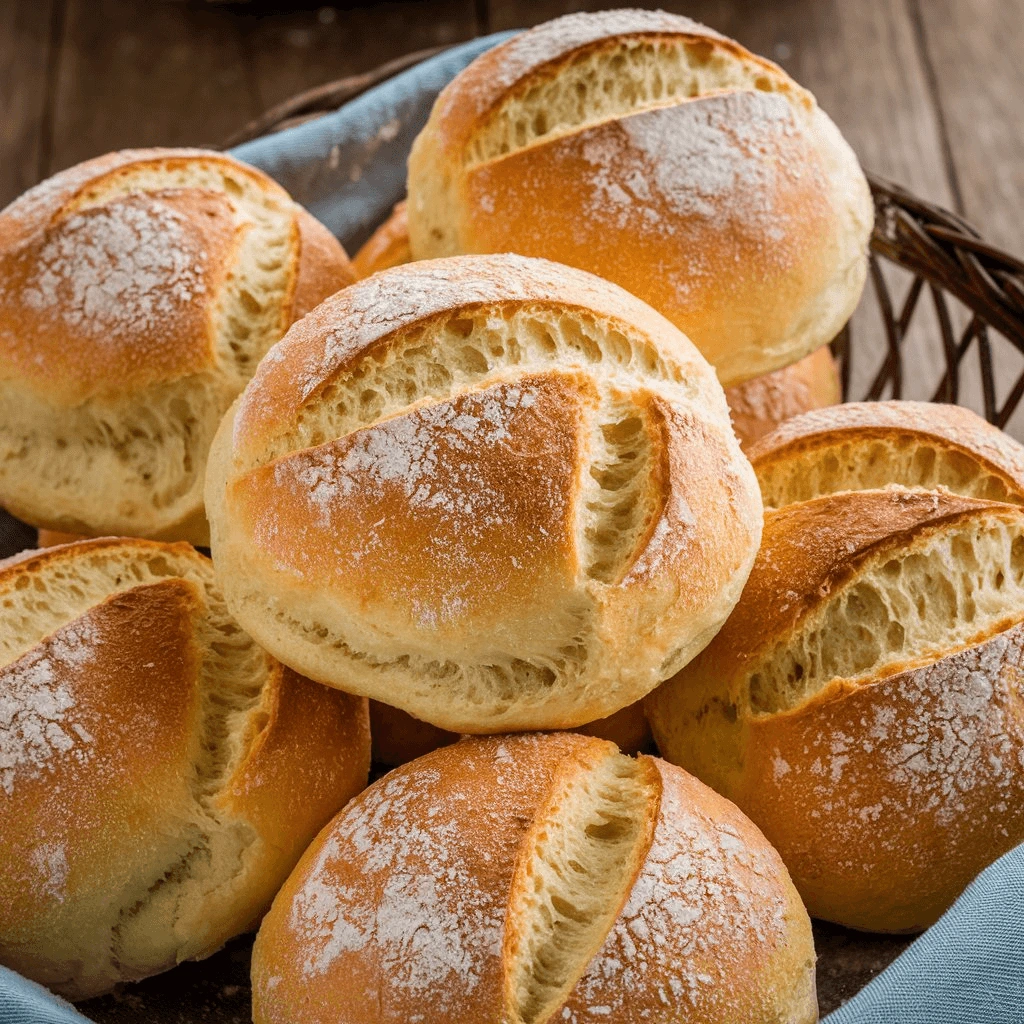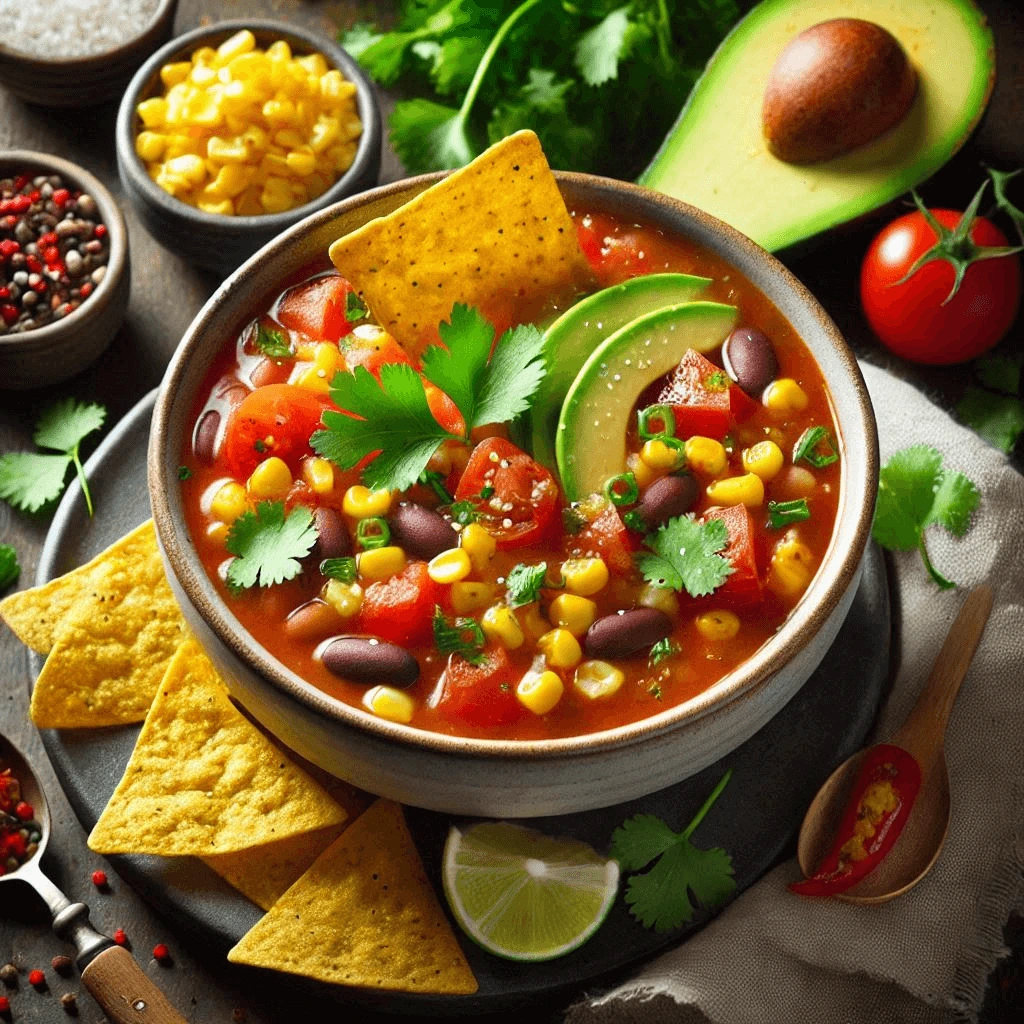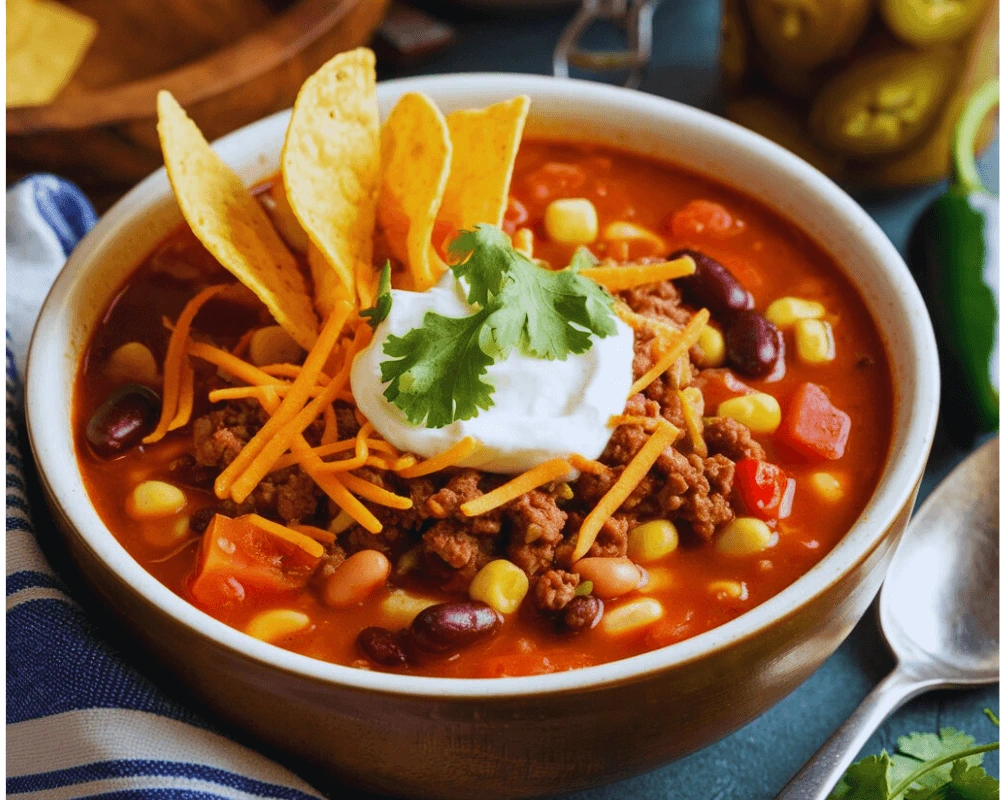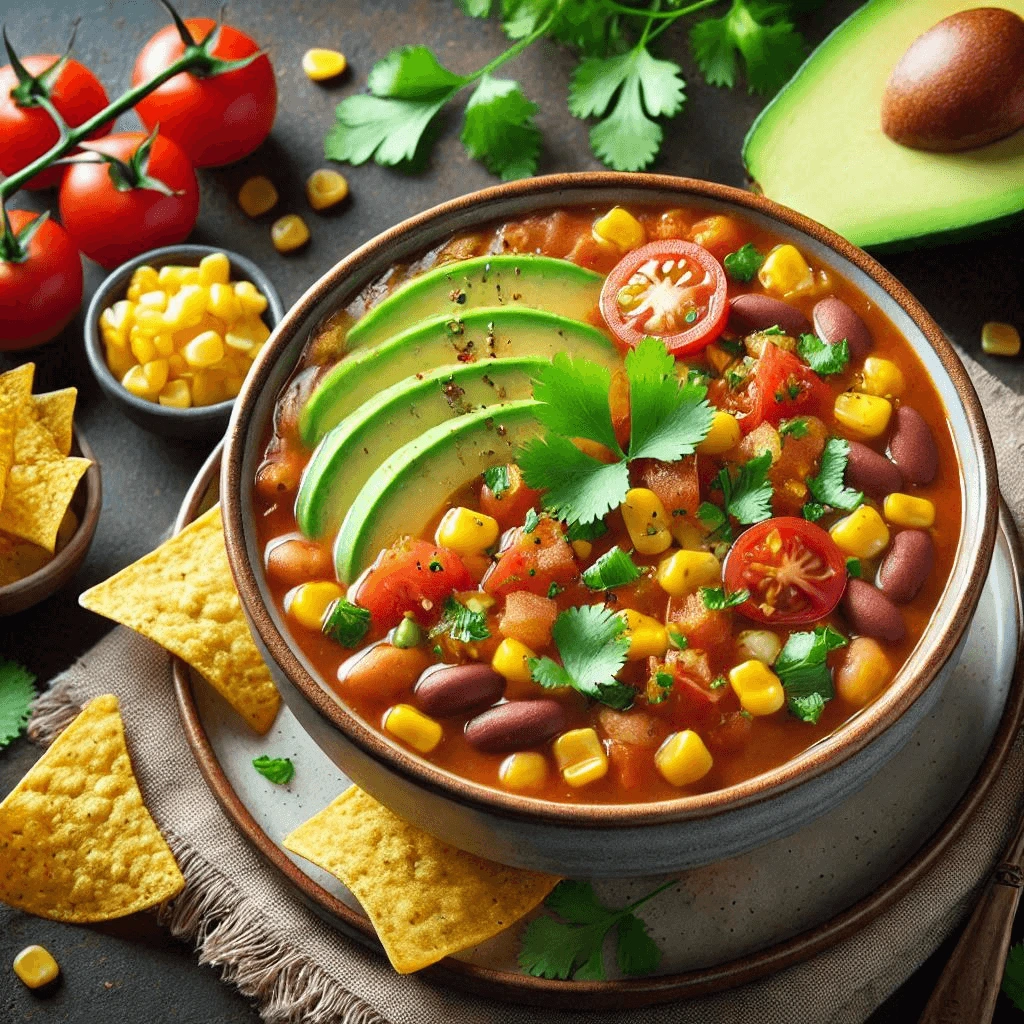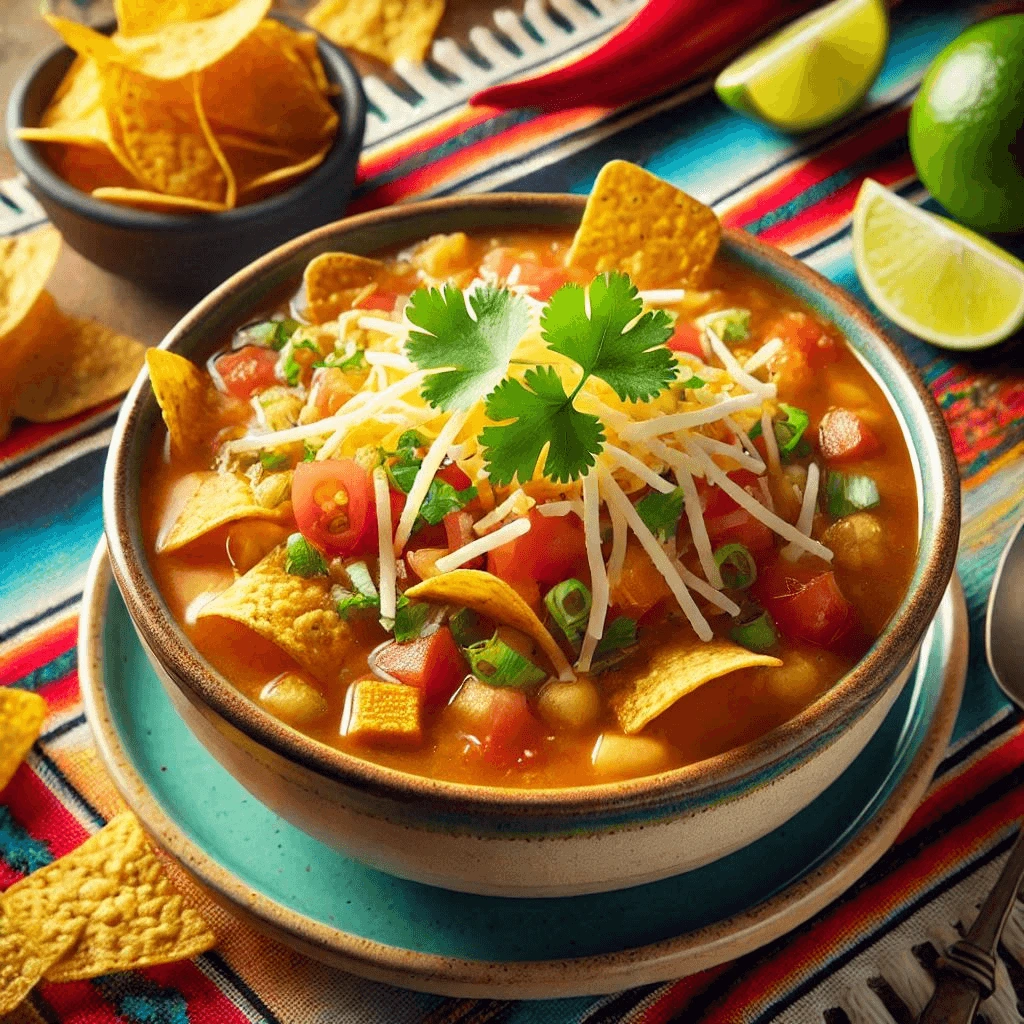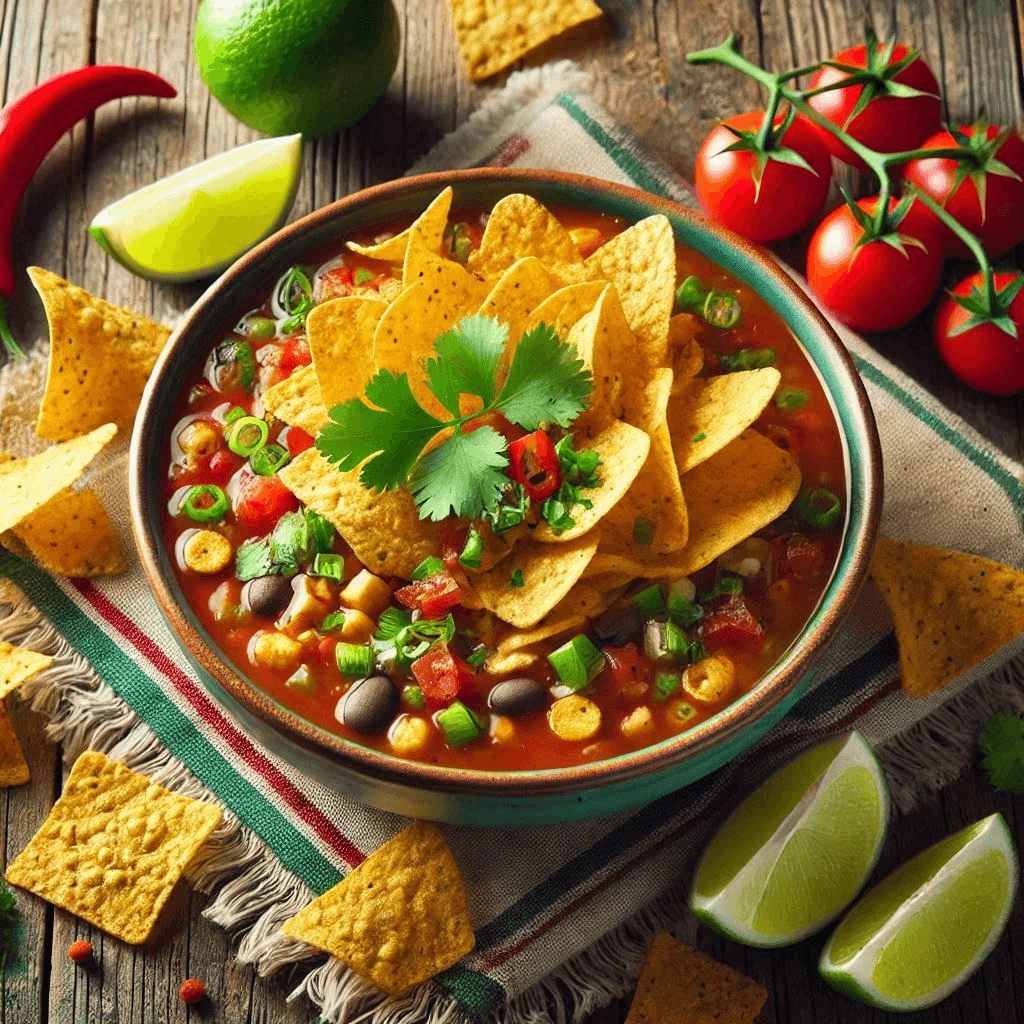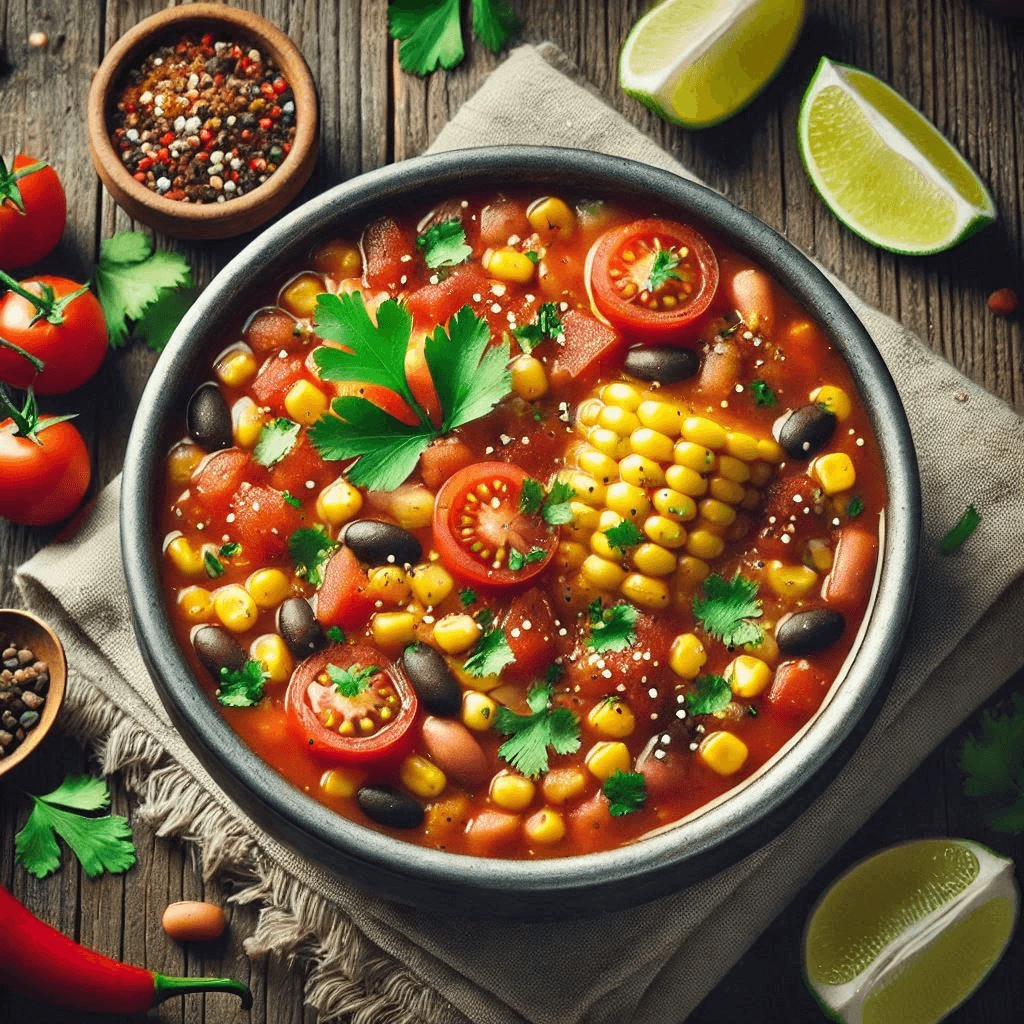Introduction:
Baked beans are more than just a side dish—they’re a comforting classic that has graced tables worldwide for generations. From smoky barbecues to hearty breakfasts, this versatile dish holds a special place in culinary traditions. But what makes baked beans so beloved? Is it the creamy, melt-in-your-mouth texture of the beans? The rich, flavorful sauce that strikes the perfect balance between sweet, savory, and tangy? Or perhaps the way this dish effortlessly complements a variety of meals, adding both depth and nutrition?
In this blog, we’re diving deep into the art of making the perfect baked beans. Whether you’re an experienced cook or a kitchen novice, mastering this dish will bring both satisfaction and praise from your family and guests. We’ll guide you through essential techniques, the right ingredients, and common pitfalls to avoid, ensuring your homemade baked beans are miles ahead of the canned varieties.
Baked beans offer endless possibilities to cater to your preferences—whether you enjoy a smoky, barbecue-inspired flavor, or a more traditional take with molasses and brown sugar. Beyond flavor, they are a nutritional powerhouse packed with protein, fiber, and vitamins, making them not just delicious but wholesome too.
By the end of this guide, you’ll be equipped with all the tools, tips, and insights to create a version of baked beans that fits your taste, lifestyle, and dietary needs. So, let’s roll up our sleeves and transform this simple dish into a culinary masterpiece!

New to cooking beans? Check out this guide to different types of beans on The Spruce Eats for more information: The Spruce Eats – Guide to Different Types of Beans.”
Ingredients for Perfectly Baked Beans

The secret to delicious baked beans lies in the thoughtful selection and preparation of high-quality ingredients. Each element contributes to the balance of flavors, textures, and aromas that make this dish so irresistible. Let’s explore the essential components and why they’re crucial for achieving perfectly baked beans.
1. Beans: The Heart of the Dish
The primary ingredient in baked beans is, of course, the beans themselves. While traditional recipes often call for navy beans, you can experiment with other varieties such as:
- Pinto Beans: Creamy and slightly nutty, ideal for a rustic texture.
- Cannellini Beans: Smooth and mild, great for absorbing flavors.
- Great Northern Beans: Firm and buttery, offering a balanced consistency.
Choose dried beans if you want more control over the cooking process and texture. Canned beans are a quick alternative, though rinsing and draining them is essential to reduce sodium content and improve flavor absorption.
2. Sweeteners: Balancing the Flavors
The sweetness in baked beans counterbalances the acidity of tomatoes and the smokiness of spices. Common sweeteners include:
- Brown Sugar: Adds a deep molasses-like flavor and rich caramelization.
- Molasses: Traditional in many recipes, molasses imparts a robust, slightly bitter-sweet character.
- Maple Syrup: Offers a natural sweetness with a subtle, woodsy aroma.
Adjust the quantity of sweeteners based on your preference for sweetness, but don’t skip them entirely, as they play a critical role in creating the dish’s signature taste.
3. Tomato Base: The Backbone of the Sauce
A rich and tangy tomato base forms the sauce that envelops the beans. Ingredients for this include:
- Tomato Paste: Concentrated and flavorful, ideal for thickening the sauce.
- Canned Tomatoes: Diced or crushed tomatoes add texture and moisture.
- Ketchup: A convenient option that combines tomatoes, sugar, and vinegar in one.
The acidic quality of tomatoes enhances the overall flavor, so ensure they’re included in some form.
4. Aromatics: Adding Depth and Aroma
Aromatics elevate the flavor profile of baked beans by creating a savory base. Popular choices include:
- Onions: Provide a mellow sweetness when sautéed or caramelized.
- Garlic: Adds a punch of savory goodness; use fresh minced garlic for the best results.
- Bell Peppers: For additional texture and subtle sweetness.
You can dice, sauté, or even roast these aromatics depending on the depth of flavor you want to achieve.
5. Spices and Seasonings: The Flavor Boosters
Spices and seasonings are crucial for achieving a well-rounded flavor. Common options include:
- Smoked Paprika: Adds a smoky depth, mimicking the flavor of outdoor cooking.
- Ground Mustard: Lends a tangy, slightly bitter note.
- Chili Powder or Cayenne Pepper: Introduces a gentle or bold heat, depending on your preference.
- Salt and Pepper: Essential for enhancing all other flavors.
6. Liquid Components: Ensuring the Right Consistency
Liquids prevent the beans from drying out during the cooking process while enhancing flavor. Common options include:
- Water or Vegetable Broth: For a simple, neutral base.
- Chicken or Beef Stock: Adds a savory richness to the beans.
- Apple Cider Vinegar: A tangy addition that brightens the dish and balances the sweetness.
7. Meats for Added Flavor (Optional)
While baked beans can stand alone as a vegetarian dish, many traditional recipes include meats for additional depth. Common choices are:
- Bacon: Adds smokiness and a crispy texture when cooked and crumbled over the dish.
- Ham: Diced or shredded, it blends seamlessly into the beans.
- Sausage: Smoky or spicy sausages pair wonderfully with the tangy sauce.
8. Optional Add-Ins for a Personal Touch
While not required, certain optional ingredients can elevate your baked beans, including:
- Liquid Smoke: To deepen the smoky flavor without requiring outdoor cooking.
- Worcestershire Sauce: Adds umami and complexity.
- Herbs: Fresh thyme or bay leaves for an earthy aroma.
Key Components of the Dish
The beauty of baked beans lies in their simplicity, yet every ingredient contributes a vital element that brings the dish to life. Below, we take an in-depth look at the key components that define this timeless recipe.
1. The Beans: A Nutritious and Textural Foundation
The beans are the heart of the dish, forming the base on which all the other flavors are built.
- Choosing the Right Beans: Navy beans are the classic choice for their creamy texture and ability to absorb flavors. However, other options such as pinto beans, Great Northern beans, or cannellini beans work wonderfully, offering slight variations in texture and flavor.
- Why Beans Matter: Their ability to absorb the savory, sweet, and tangy elements of the sauce ensures every bite is packed with flavor.
- Health Benefits: Rich in plant-based protein, fiber, and essential vitamins, beans are a nutritious addition that supports heart health, digestion, and sustained energy.
2. The Sauce: A Harmony of Flavors
The sauce is what transforms baked beans from a simple bean dish into a flavor-packed creation.
- Sweetness: Molasses, brown sugar, or maple syrup add a touch of sweetness to balance the savory and tangy elements. These ingredients create the caramelized richness that defines baked beans.
- Tanginess: A slight tang comes from tomato paste, ketchup, or vinegar, which brightens the dish and cuts through the richness.
- Smoky and Savory Notes: Ingredients like smoked paprika or liquid smoke mimic the flavor of traditional outdoor cooking, while aromatics like onions and garlic add depth.
- Consistency: The sauce should be thick enough to cling to the beans while keeping them moist during slow cooking.
3. Seasonings and Spices: Elevating the Dish
The right combination of seasonings and spices is crucial for creating a dish that’s vibrant and dynamic.
- Smoked Paprika and Chili Powder: These spices introduce warmth and smoky undertones, adding complexity.
- Mustard (Ground or Prepared): Offers a slightly spicy, tangy edge that cuts through the sweetness.
- Salt and Black Pepper: Essential for enhancing all other flavors, creating balance in the dish.
- Optional Heat: A pinch of cayenne pepper or a dash of hot sauce provides a subtle kick for those who like a bit of spice.
4. Aromatics: The Flavor Builders
Aromatics are essential for creating a savory backbone to the dish.
- Onions: When sautéed, onions release natural sugars, imparting a mild sweetness and complexity to the beans.
- Garlic: Adds a bold, savory note that complements both the sweet and smoky flavors in the sauce.
- Bell Peppers: Optional but excellent for introducing a hint of sweetness and slight crunch, enhancing texture and depth.
Pre-cooking these ingredients in oil or butter helps to fully release their aromas and flavors, ensuring they infuse the dish effectively.
5. Optional Proteins: Adding Heft and Flavor
For those who enjoy non-vegetarian versions, proteins like bacon or sausage bring richness and an umami boost.
- Bacon: Crispy and smoky, it melds beautifully with the sweet and tangy sauce. A few pieces can be used as a garnish or stirred into the beans for a bold flavor boost.
- Sausage or Ham: Smoky sausages or diced ham add heartiness, making the dish substantial enough to serve as a main course.
- Balance: While meat can elevate the flavors, it’s crucial to avoid overpowering the beans or sauce.
6. Liquid Components: Perfecting Texture and Moisture
Baked beans rely on just the right amount of liquid to maintain their luscious texture during cooking.
- Water or Broth: Plain water works, but vegetable or chicken broth deepens the savory profile.
- Vinegar or Lemon Juice: A splash of acidity balances the sweetness and enhances the sauce’s brightness.
Optional Add-Ins for Flavor
While the core recipe for baked beans is already rich and delicious, optional add-ins can elevate the flavor profile and add layers of complexity. These extras allow you to customize the dish to suit different preferences, occasions, or nutritional needs.
1. Sweet Add-Ins for a Richer Flavor
Adding sweet ingredients enhances the caramelized notes in baked beans and balances out the tangy and savory components.
- Maple Syrup: Provides a natural sweetness with a subtle woody undertone, complementing the smoky and savory elements of the dish.
- Honey: Adds a milder, floral sweetness and contributes to a glossy finish.
- Diced Apples: Introduce a fruity sweetness that softens as it cooks, blending seamlessly with the beans and sauce.
2. Smoky and Savory Enhancements
Smokiness is a hallmark of many baked beans recipes. These add-ins deepen the smoky and umami notes.
- Smoked Sausage or Kielbasa: Thinly sliced or diced, these meats bring a bold smoky flavor and added texture.
- Liquid Smoke: Just a few drops can mimic the flavor of slow-smoked beans cooked outdoors.
- Chorizo or Bacon Lardons: These meats not only add smokiness but also provide a slightly crispy texture for contrast.
3. Spicy Additions for Heat Lovers
A touch of heat can give baked beans a spicy kick, taking the flavor in a bold and exciting direction.
- Jalapeños: Fresh or pickled jalapeños offer a mild heat with a tangy finish. For less heat, remove the seeds and membranes.
- Hot Sauce: A dash of your favorite hot sauce adds customizable heat levels without overpowering the dish.
- Crushed Red Pepper Flakes or Cayenne Pepper: These spices deliver a steady, warming heat throughout the dish.
4. Herbal and Citrus Infusions
Fresh herbs and citrus zest can brighten the dish and balance its rich, hearty flavors.
- Fresh Herbs: Chopped parsley, thyme, or rosemary adds earthy, fragrant notes that balance the sweetness and smokiness.
- Lemon or Orange Zest: A sprinkle of citrus zest before serving enhances the dish’s aroma and creates a lively, fresh finish.
5. Vegetables for Added Texture and Nutrients
Adding vegetables boosts the dish’s nutritional profile while contributing new textures and flavors.
- Bell Peppers: Diced and sautéed, these add a slight crunch and a sweet undertone.
- Carrots: Finely grated carrots subtly enhance the dish’s sweetness without standing out.
- Mushrooms: Chopped mushrooms bring umami richness and pair well with smoky flavors.
6. International Twists
For a unique take, incorporate ingredients that add an international flair.
- Soy Sauce or Tamari: These bring depth and a touch of salty umami, especially in vegetarian versions.
- Curry Powder: Adds a warm, earthy spice blend, offering a distinct twist on classic baked beans.
- Coconut Milk: For a creamy, tropical vibe, mix a small amount into the sauce.
7. Toppings for Extra Texture
Finish the dish with toppings that introduce contrasting textures and flavors.
- Crumbled Cheese: Sharp cheddar or feta melts slightly into the beans, creating a creamy element.
- Toasted Bread Crumbs: A sprinkle of seasoned bread crumbs on top adds a crunchy finish.
- Chopped Nuts: Toasted almonds or pecans offer a nutty crunch that complements the sweetness and smokiness.
Choosing the Right Beans
The choice of beans is a crucial step when preparing baked beans, as it sets the foundation for the dish’s texture, flavor absorption, and overall appeal. Here’s a detailed exploration of the best beans for baked beans, including factors to consider and tips for making the right selection.
1. Classic Beans for Traditional Flavor
- Navy Beans: These small white beans are the traditional choice for baked beans. Their creamy texture and ability to soak up the flavors of the sauce make them a favorite for classic recipes.
- Great Northern Beans: Slightly larger than navy beans, Great Northern beans have a mild flavor and firm texture. They are an excellent alternative for a subtle variation.
- Cannellini Beans: Known as white kidney beans, these are larger and meatier than navy beans, offering a slightly different texture while still absorbing flavors well.
2. Alternative Beans for a Creative Twist
If you’re looking to put a unique spin on your baked beans, consider these options:
- Pinto Beans: These light brown, speckled beans are slightly sweeter and creamier, providing a rich base for a Southwestern-style variation of baked beans.
- Black Beans: For a darker and slightly earthy flavor, black beans are a good choice. They pair wonderfully with smoky and spicy seasonings.
- Butter Beans (Lima Beans): Their larger size and buttery texture create a heartier version of baked beans, adding variety to your dish.
3. Dried Beans vs. Canned Beans
Your choice between dried and canned beans will impact the preparation time and flavor of your baked beans.
- Dried Beans:
- Advantages: They tend to have a fresher taste and firmer texture. You can control the level of salt and additives, creating a more natural flavor profile.
- Preparation: Dried beans require soaking (optional, depending on your method) and a longer cooking time, which adds depth to the flavor.
- Canned Beans:
- Advantages: Convenient and time-saving, canned beans are pre-cooked and only require rinsing before use. They are ideal for quick meals or beginners.
- Considerations: Look for low-sodium or no-salt-added options to control the saltiness of your dish.
4. Factors to Consider When Choosing Beans
- Texture: Beans like navy or Great Northern are soft and tender, while cannellini or butter beans are firmer and meatier. Match your choice to the texture you want in the final dish.
- Flavor Absorption: Smaller beans (like navy beans) absorb more sauce, making each bite packed with flavor, while larger beans can maintain a slight nuttiness that adds complexity.
- Color: White or light-colored beans are traditional, but darker beans like black or pinto can create a visually striking dish.
- Dish Size: Larger beans are better for main-course servings, while smaller beans are ideal for side dishes.
5. Tips for Cooking and Prepping Beans
- Rinse and Sort: Always rinse dried or canned beans to remove debris or excess sodium. Sorting dried beans ensures no stones or damaged beans are included.
- Season as You Go: For dried beans, add salt, bay leaves, or aromatics like garlic and onion to the cooking water to infuse the beans with flavor. Avoid adding acidic ingredients (like vinegar or tomato) until beans are tender, as they can hinder softening.
- Don’t Overcook: The beans should remain intact yet tender, as they will continue cooking in the sauce.
Preparing Your Beans: The First Step to Success

The preparation of beans is the cornerstone of creating perfectly baked beans. Proper preparation ensures the beans are tender, flavorful, and ready to absorb the rich and smoky sauce that defines this dish. Below is an expanded look at the essential steps to prepare your beans and set the foundation for culinary success.
1. Choosing Between Dried and Canned Beans
Preparation starts with selecting your beans—dried or canned. Each option has its unique steps and considerations:
- Dried Beans:
- Preferred for traditional recipes due to their robust flavor and texture.
- Requires soaking and boiling to achieve tenderness.
- Canned Beans:
- A convenient, ready-to-use option that saves time.
- Requires rinsing to remove excess sodium and improve the dish’s flavor balance.
2. Sorting and Cleaning Dried Beans
When using dried beans, sorting and cleaning are essential steps.
- Sorting: Spread the beans on a clean surface and remove any debris, damaged beans, or small stones.
- Rinsing: Place the sorted beans in a colander and rinse them thoroughly under cold running water to remove dirt or dust.
3. Soaking the Beans: To Soak or Not to Soak
Soaking is a key step that can significantly reduce cooking time and improve the beans’ texture. There are three soaking methods:
- Traditional Overnight Soak:
- Place the beans in a large bowl with enough cold water to cover them by at least two inches.
- Let them soak for 8–12 hours or overnight.
- Drain and rinse before cooking.
- Quick Soak Method:
- Boil the beans in a large pot of water for 2–3 minutes.
- Remove from heat, cover, and let them sit for an hour.
- Drain and rinse thoroughly.
- No-Soak Option:
- If short on time, you can skip soaking altogether and cook the beans longer.
- Use a slow cooker or pressure cooker to ensure even cooking.
4. Cooking the Beans: The Perfect Tenderness
Once soaked (or skipped soaking), cooking the beans is the next step. Proper cooking is essential for the beans to achieve the right texture.
- Simmering on the Stovetop:
- Add the beans to a large pot and cover with fresh water (around 2 inches above the beans).
- Bring to a boil, then reduce to a simmer.
- Add aromatics like onions, garlic, or bay leaves to enhance the flavor during cooking.
- Simmer for 1–2 hours or until the beans are tender but not mushy.
- Pressure Cooker or Instant Pot:
- Add the beans and water (following the cooker’s ratio guidelines).
- Cook on high pressure for 25–30 minutes for soaked beans or 35–45 minutes for unsoaked beans.
5. Seasoning During Cooking
- Timing of Salt: Adding salt too early can toughen the beans, so it’s best to season once the beans are tender.
- Herbs and Spices: Including thyme, bay leaves, or garlic during the cooking process imparts subtle layers of flavor.
- Avoid Acidity: Wait until the beans are tender before adding acidic ingredients like tomatoes, vinegar, or lemon juice, as these can hinder softening.
6. Preparing Canned Beans
Canned beans require minimal preparation, but a few steps can enhance their quality:
- Rinse Thoroughly: Rinse the beans under cold water to remove the starchy liquid and excess salt from the canning process.
- Season for Freshness: Toss the beans with olive oil, garlic powder, or fresh herbs before adding them to your recipe.
7. Storage and Ready-to-Use Beans
If you prepare dried beans in advance:
- Store in the Fridge: Cooked beans can be stored in an airtight container in the refrigerator for up to 5 days.
- Freeze for Later: Portion beans into freezer-safe bags or containers, ensuring you include some cooking liquid. Beans can be frozen for up to 3 months.
Soaking vs. No-Soak Method
When preparing baked beans, one of the foundational decisions you’ll need to make is whether to soak the dried beans before cooking or skip the soak altogether. Both methods have their merits and drawbacks, and your choice can influence the beans’ texture, flavor, and cooking time. Here’s an expanded look at the two approaches to help you decide which method works best for your recipe.
1. The Soaking Method: Tradition and Efficiency
Soaking beans before cooking is a classic approach and comes with several benefits:
- Reduces Cooking Time: Soaking softens the beans, which significantly shortens the cooking time. This is particularly beneficial for large batches or recipes with longer cook times like baked beans.
- Improves Texture: Pre-soaked beans tend to cook more evenly and develop a creamy, tender texture, which is ideal for absorbing the flavors of sauces and seasonings.
- Eases Digestion: Soaking helps remove some of the complex sugars (oligosaccharides) responsible for digestive discomfort. Rinsing the soaking water can further reduce these elements.
Methods for Soaking:
- Overnight Soak:
- Add dried beans to a large bowl and cover with water, leaving enough room for the beans to expand.
- Let them soak for 8–12 hours.
- Drain and rinse before cooking.
- Quick Soak:
- Bring the beans and water to a boil.
- Boil for 2–3 minutes, then remove from heat and let sit, covered, for an hour.
- Drain and rinse before cooking.
Drawbacks of Soaking:
- Time: It requires advance planning to allow soaking time.
- Potential Over-Softening: If soaked for too long, some beans may break apart during cooking.
2. The No-Soak Method: Convenience and Flavor
The no-soak method involves cooking dried beans directly without pre-soaking. It’s increasingly popular due to its simplicity and for yielding rich, intense flavors.
- Convenience: Ideal for when you’re short on time or planning a last-minute meal, as it eliminates the waiting period.
- Enhanced Flavor: Cooking the beans directly in flavorful liquids like broth or alongside seasonings allows them to absorb robust flavors throughout the process.
- Better Texture for Certain Dishes: Some recipes, like baked beans or stews, benefit from the slightly firmer texture of unsoaked beans.
Key Considerations:
- Longer Cooking Time: No-soak beans typically require an additional 1–2 hours of cooking, depending on the type of bean and the cooking method.
- Digestive Concerns: The complex sugars remain intact without the soaking step, which may cause more digestive discomfort for some individuals.
3. Which Method is Best for Baked Beans?
The decision between soaking and no-soaking depends on your needs and the desired result:
- For a Softer, Traditional Texture: Soaking is ideal if you’re aiming for classic baked beans with a tender texture that melts into the sauce.
- For Time Efficiency in Preparation: Use the no-soak method if you’re preparing a quick dish or prefer a slightly firmer texture for the beans.
- To Balance Time and Texture: A quick soak can offer a middle ground, shaving some time off the cooking process without requiring overnight planning.
4. Tips for Success Regardless of the Method
- Adjust your cooking method to compensate for the choice you make:
- Soaked beans require less liquid and a shorter cook time.
- No-soak beans benefit from the use of a pressure cooker or slow cooker to achieve even tenderness without excessive liquid loss.
- Always test for doneness: Beans should be tender but not falling apart.
- Add acidic ingredients (like tomatoes, vinegar, or molasses) only after the beans are fully tender.
Cooking Techniques for Tender Beans
Achieving perfectly tender beans is key to making baked beans that have the ideal texture: firm yet soft enough to absorb flavors without becoming mushy. The cooking process can seem straightforward, but using the right techniques ensures your beans cook evenly and become luxuriously tender. Here’s an in-depth look at the best cooking techniques for ensuring tender beans that are a perfect base for any baked beans recipe.
1. Slow and Steady Simmering
Slow cooking is one of the most effective methods for achieving tender beans, and it’s a technique that helps avoid overcooking or unevenly cooked beans:
- Simmer on Low Heat: Once your beans are soaked or rinsed (if using canned), add them to a pot with plenty of water. Bring the water to a boil, then reduce the heat to a gentle simmer. High heat can cause beans to cook too quickly on the outside while the inside remains undercooked.
- Avoid Boiling Rapidly: Rapid boiling causes beans to break apart or develop uneven textures, so make sure the heat stays low and the beans cook at a steady simmer.
- Add Aromatics and Seasonings: Onions, garlic, and herbs can be added at this point to enhance the flavor of the beans as they cook.
2. Pressure Cooker or Instant Pot
Using a pressure cooker or an Instant Pot is a game-changer for reducing cooking time without sacrificing tenderness, especially when skipping the soaking step:
- Faster Cooking: A pressure cooker can cook beans that are unsoaked in just 35–45 minutes, while soaked beans usually take just 25–30 minutes. This technique preserves the flavor and texture of the beans without the need to watch over them for extended periods.
- Even Cooking: A pressure cooker ensures that every bean is cooked at the same time and remains tender. Pressure cooking also eliminates the need to keep adding liquid, making it ideal for dishes where you want your beans to absorb the flavors of the sauce or broth.
- Use the Correct Water-to-Bean Ratio: Follow specific guidelines based on the type of bean. For example, 1 part beans to 3 parts water is generally recommended for cooking dried beans.
3. Slow Cooker
A slow cooker, or Crock-Pot, is a fantastic tool to cook beans slowly and gently over an extended period:
- Ideal for Pre-Soaked Beans: If you’ve soaked your beans overnight, the slow cooker helps them cook at the perfect pace and prevents them from turning mushy. Generally, soaked beans take 4–6 hours on the low setting to become tender in a slow cooker.
- No Overwatching: The slow cooker doesn’t require constant supervision, making it an easy and low-maintenance option. You can leave the beans to cook while you focus on other tasks.
- Layer Flavors: Because beans are cooked in a tightly sealed pot, all the flavors from seasonings and aromatics are infused, creating deep, delicious flavors in every bite. You can add the beans, liquids, and seasonings all at once and let the slow cooker do the rest.
4. The Right Amount of Liquid
Liquid is crucial for cooking tender beans, and using the right amount ensures they cook through without becoming too dry or soupy:
- Sufficient Water: Beans expand as they absorb liquid, so be sure to cover them completely in water during the initial stages of cooking. For soaked beans, you’ll want to ensure the water level stays about 2–3 inches above the beans.
- Flavor-Rich Liquid: In addition to water, consider using broth (vegetable, chicken, or beef) for added richness. This gives your beans a more flavorful base that will be absorbed as they cook.
- Adjust for the Desired Consistency: If you want your beans to have a bit of “sauce” for baked beans, make sure the liquid level is higher during cooking, as the beans will absorb quite a bit of it.
5. Timing for Tenderness
Beans vary in their cooking times depending on the variety, and knowing when to stop cooking is crucial:
- Test Frequently: Check the beans at regular intervals, especially as you approach the recommended cooking time for your chosen method (on the stovetop, pressure cooker, or slow cooker).
- Avoid Overcooking: It’s easy to overcook beans if you let them simmer too long. Once the beans are tender but not mushy, it’s time to remove them from heat or switch off the pressure cooker or slow cooker. Overcooked beans will fall apart, losing their texture and appealing bite.
- The Bite Test: A simple bite test is one of the best ways to determine if your beans are done. They should feel tender and creamy when you bite into them, but they should still hold their shape.
6. Resting Time for Even Tenderness
Resting the beans after they finish cooking allows the flavor and moisture to settle, resulting in more evenly cooked beans:
- Let Beans Sit: After the beans are cooked, let them sit in the pot, covered, for at least 10–15 minutes. This step allows the flavors to continue to develop and ensures the beans are evenly hydrated.
- Redistribute the Heat: During the resting period, the heat inside the pot will distribute more evenly, helping any beans that are not fully tender to soften further.
Pro Tips for Ensuring Tender Beans
- Stir Occasionally: When cooking beans, especially in a stovetop pot or slow cooker, stir them every now and then. This ensures even cooking and prevents burning at the bottom.
- Add Seasoning at the Right Time: Add salt, vinegar, tomatoes, or other acidic ingredients toward the end of the cooking process, as adding them too early can interfere with the softening of the beans.
- Use Fresh Beans: Beans that are older (past their expiration date) may not cook as evenly or tender. It’s always better to use fresh dried beans, if possible.
Common Mistakes to Avoid
1. Overcooking the Beans
- What Happens: Overcooked beans become mushy and lose their texture, making the dish unappetizing.
- How to Avoid:
- Cook beans until they are tender but still hold their shape.
- Check beans periodically during cooking (especially if using a slow cooker or pressure cooker).
- Follow recommended cooking times for the type of beans you’re using.
2. Undercooking the Beans
- What Happens: Undercooked beans are hard and difficult to digest, which can ruin the dish.
- How to Avoid:
- Soak beans overnight or use the quick-soak method to ensure even cooking.
- Simmer beans gently until they are fully tender.
- Taste-test a few beans to ensure they’re cooked through before proceeding with the recipe.
3. Skipping the Soaking Step
- What Happens: Unsoaked beans take much longer to cook and may not cook evenly.
- How to Avoid:
- Always soak beans (either overnight or using the quick-soak method) to reduce cooking time and improve texture.
- If you’re short on time, use canned beans as a shortcut (but adjust cooking times accordingly).
4. Adding Salt or Acid Too Early
- What Happens: Adding salt, tomatoes, or acidic ingredients (like vinegar) too early can prevent beans from softening.
- How to Avoid:
- Wait until the beans are fully cooked before adding salt or acidic ingredients.
- If using tomato-based sauces, add them during the final stages of cooking.
5. Using Old or Stale Beans
- What Happens: Old beans take longer to cook and may never soften properly, no matter how long you cook them.
- How to Avoid:
- Use fresh, high-quality beans. Check the packaging date if possible.
- Store beans in an airtight container in a cool, dry place to maintain freshness.
6. Not Adding Enough Liquid
- What Happens: Beans need enough liquid to cook properly. Insufficient liquid can lead to uneven cooking or burning.
- How to Avoid:
- Use enough water or broth to fully cover the beans during cooking.
- Check periodically and add more liquid if needed, especially during long cooking times.
7. Ignoring the Foam During Cooking
- What Happens: Foam forms on the surface when cooking beans, and if not removed, it can affect the flavor and texture.
- How to Avoid:
- Skim off any foam that rises to the surface during the initial stages of cooking.
- This step ensures a cleaner, smoother final dish.
8. Overloading the Pot
- What Happens: Cooking too many beans at once can lead to uneven cooking and inconsistent texture.
- How to Avoid:
- Use a large enough pot to allow beans to move freely in the liquid.
- Cook beans in batches if necessary.
9. Not Seasoning Properly
- What Happens: Underseasoned baked beans can taste bland and unappetizing.
- How to Avoid:
- Taste and adjust seasoning (salt, pepper, spices) throughout the cooking process.
- Add flavor enhancers like smoked paprika, garlic, or herbs to elevate the dish.
10. Rushing the Process
- What Happens: Baked beans are a slow-cooked dish, and rushing can lead to undercooked beans or unbalanced flavors.
- How to Avoid:
- Plan ahead and allow enough time for soaking, cooking, and baking.
- Use a slow cooker or oven for the best results, as these methods allow flavors to develop fully.
Final Tips for Perfect Beans
- Always taste-test your beans before serving to ensure they’re cooked and seasoned properly.
- If using canned beans, rinse them thoroughly to remove excess sodium and improve texture.
- Experiment with flavors, but avoid making too many changes at once until you’ve mastered the basics.
Step-by-Step Guide to Cooking Baked Beans
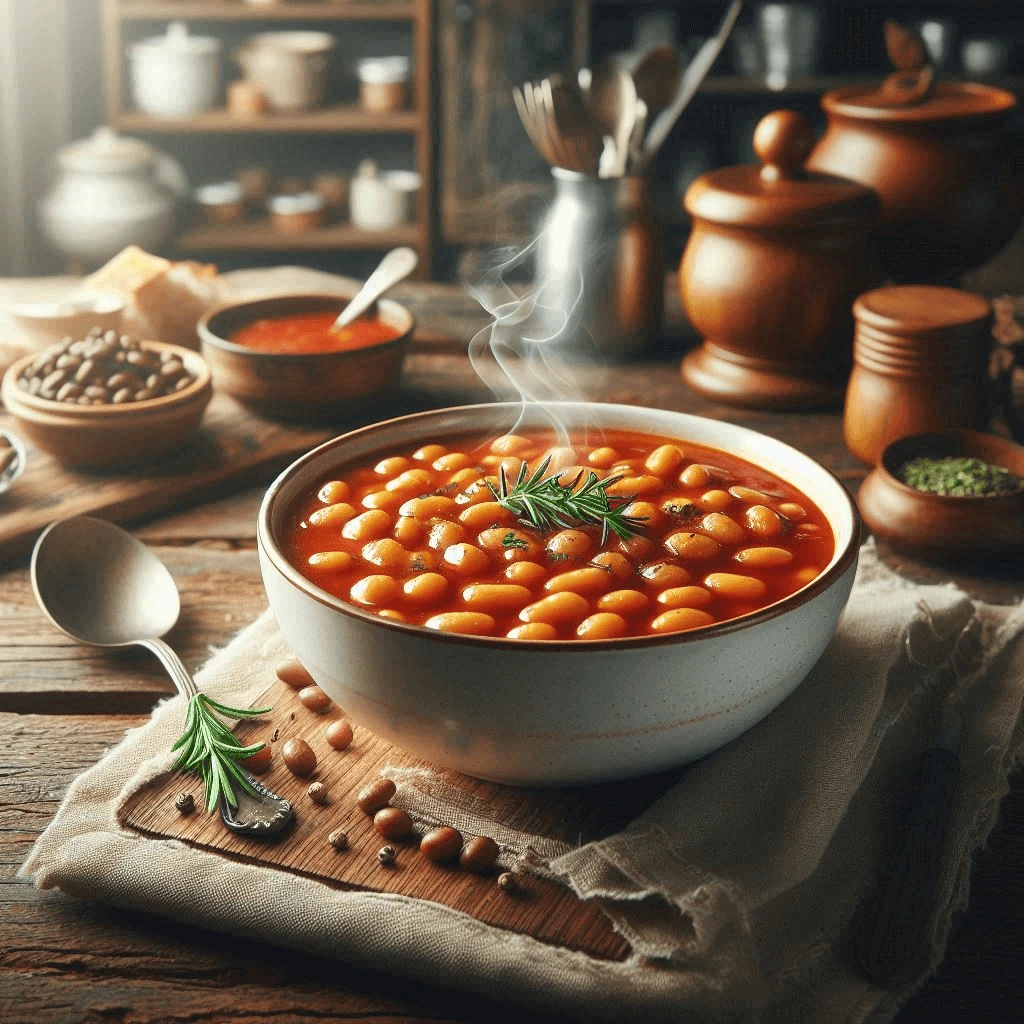
Making perfectly baked beans is all about layering flavors and using the right techniques to achieve a tender, creamy texture. This step-by-step guide will walk you through the process, whether you’re using an oven, slow cooker, or stovetop.
Step 1: Prepping Your Ingredients
- Dice and Chop: Start by finely dicing one medium onion and mincing 2-3 cloves of garlic. These aromatics will form the flavor base of your dish.
- Measure Spices and Sauces: Gather your spices (e.g., smoked paprika, mustard powder, black pepper) and measure out your wet ingredients (e.g., tomato sauce, molasses, brown sugar, and Worcestershire sauce). Having everything prepped and ready will make the cooking process smoother.
- Prepare the Beans: If you soaked your beans overnight or used the quick-soak method, drain and rinse them thoroughly. If you’re using canned beans, rinse and drain them to remove excess sodium.
Step 2: Combining Ingredients in the Dish
- Sauté the Aromatics: In a large skillet or Dutch oven, heat a tablespoon of oil or butter over medium heat. Sauté the diced onions until they’re translucent (about 5 minutes), then add the minced garlic and cook for another minute until fragrant.
- Build the Sauce: Add your tomato sauce, molasses, brown sugar, mustard, and spices to the skillet. Stir well to combine and let the mixture simmer for 2-3 minutes to allow the flavors to meld.
- Add the Beans: Gently fold in the prepared beans, ensuring they’re evenly coated with the sauce. If you’re using bacon or other add-ins, layer them in at this stage.
Step 3: Slow Cooking or Baking
- Oven Method:
- Preheat your oven to 325°F (160°C).
- Transfer the bean mixture to an oven-safe baking dish or Dutch oven. Cover the dish with a lid or aluminum foil to trap moisture.
- Bake for 2-3 hours, stirring occasionally, until the beans are tender and the sauce has thickened. For a caramelized top, remove the lid or foil during the last 30 minutes of cooking.
- Slow Cooker Method:
- Transfer the bean mixture to a slow cooker. Cover and cook on low for 6-8 hours or on high for 3-4 hours. Stir occasionally to prevent sticking.
- The slow cooker method is ideal for achieving deeply infused flavors and ultra-tender beans.
- Stovetop Method:
- If you’re short on time, simmer the bean mixture on the stovetop over low heat for 1-2 hours, stirring occasionally. Add a splash of water or broth if the sauce becomes too thick.
Pro Tips for Success:
- Taste and Adjust: Before the final cooking stage, taste the sauce and adjust the seasoning. Add more brown sugar for sweetness, a splash of vinegar for tang, or a pinch of salt for balance.
- Low and Slow: Baking beans at a low temperature for a longer time ensures they become tender without breaking apart.
- Rest Before Serving: Let the baked beans rest for 10-15 minutes after cooking. This allows the flavors to settle and the sauce to thicken further.
tep 1: Prepping Your Ingredients
The foundation of any great dish lies in the preparation, and baked beans are no exception. Taking the time to properly prep your ingredients ensures a smooth cooking process and a flavorful final result. Here’s a detailed breakdown of how to prep your ingredients for perfectly baked beans:
1. Dicing and Chopping Aromatics
- Onions: Start with one medium onion. Peel off the outer skin, cut it in half from root to stem, and lay each half flat on the cutting board. Make vertical cuts (without cutting through the root end), then slice horizontally, and finally dice into small, even pieces. This ensures the onions cook evenly and blend seamlessly into the sauce.
- Garlic: Use 2-3 cloves of garlic, depending on your preference for flavor. Peel the cloves and mince them finely. You can also use a garlic press for convenience. Garlic adds a savory depth to the dish, so don’t skip it!
- Optional Add-Ins: If you’re using bacon, chop it into small pieces. For jalapeños or other fresh peppers, remove the seeds and dice them finely.
2. Measuring Spices and Sauces
- Dry Spices: Gather your spices in small bowls or on a plate for easy access. Common spices for baked beans include:
- Smoked paprika (1-2 teaspoons for a smoky flavor)
- Mustard powder (1 teaspoon for tanginess)
- Black pepper (½ teaspoon for a hint of heat)
- Salt (to taste, but be cautious if using canned beans or bacon)
- Wet Ingredients: Measure out the following and set them aside:
- Tomato sauce (1-2 cups, depending on how saucy you like your beans)
- Molasses (¼ cup for a rich, sweet flavor)
- Brown sugar (¼ cup for added sweetness)
- Worcestershire sauce (1-2 tablespoons for umami depth)
- Apple cider vinegar or white vinegar (1-2 tablespoons for a tangy kick)
- Optional Liquid Smoke: If you want a smoky flavor without bacon, add ½ teaspoon of liquid smoke.
3. Preparing the Beans
- If Using Dried Beans:
- Soak the beans overnight in a large bowl of water (use 3 cups of water for every 1 cup of beans). This softens the beans and reduces cooking time.
- Alternatively, use the quick-soak method: Boil the beans in water for 2-3 minutes, then remove from heat, cover, and let them soak for 1 hour.
- After soaking, drain and rinse the beans thoroughly to remove any impurities.
- If Using Canned Beans:
- Open the cans and drain the liquid. Rinse the beans under cold water to remove excess sodium and the starchy canning liquid.
- Canned beans are already cooked, so they require less cooking time compared to dried beans.
4. Prepping Additional Ingredients
- Bacon (Optional): If you’re using bacon, chop it into small pieces or strips. You can cook it beforehand to render the fat, which can then be used to sauté the onions for extra flavor.
- Vegetables (Optional): If you’re adding bell peppers, carrots, or celery, dice them into small, uniform pieces so they cook evenly.
- Fresh Herbs (Optional): If you’re using fresh herbs like thyme or parsley, chop them finely and set them aside for garnishing at the end.
5. Organizing Your Workspace
- Mise en Place: This French term means “everything in its place.” Arrange all your prepped ingredients in small bowls or on a tray before you start cooking. This not only makes the process more efficient but also ensures you don’t forget any key ingredients.
- Tools You’ll Need:
- A sharp knife and cutting board for chopping.
- Measuring cups and spoons for accuracy.
- A colander for rinsing beans.
- A large skillet, Dutch oven, or slow cooker for cooking.
Step 2: Combining Ingredients in the Dish
Once your ingredients are prepped and ready, the next step is to combine them in a way that maximizes flavor and ensures even cooking. This stage is where the magic happens—the aromatics, spices, sauces, and beans come together to create a rich, cohesive dish. Here’s a detailed guide to combining your ingredients for perfectly baked beans:
1. Sautéing the Aromatics
- Heat the Pan: Start by heating a large skillet, Dutch oven, or saucepan over medium heat. Add 1-2 tablespoons of oil, butter, or bacon fat (if using bacon) to the pan.
- Cook the Bacon (Optional): If you’re using bacon, add the chopped pieces to the pan and cook until crispy. Remove the bacon with a slotted spoon and set it aside, leaving the rendered fat in the pan for added flavor.
- Sauté the Onions: Add the diced onions to the pan and cook for 5-7 minutes, stirring occasionally, until they become translucent and slightly golden. This step is crucial for building a flavorful base.
- Add the Garlic: Stir in the minced garlic and cook for another 1-2 minutes until fragrant. Be careful not to burn the garlic, as it can turn bitter.
2. Building the Sauce
- Add the Wet Ingredients: Pour in the tomato sauce, molasses, brown sugar, Worcestershire sauce, and vinegar. Stir well to combine. These ingredients form the sweet, tangy, and savory base of your baked beans.
- Incorporate the Spices: Sprinkle in the smoked paprika, mustard powder, black pepper, and any other spices you’re using. Stir to evenly distribute the spices throughout the sauce.
- Simmer the Sauce: Let the mixture simmer for 2-3 minutes, stirring occasionally. This allows the flavors to meld and the sauce to thicken slightly. Taste the sauce and adjust the seasoning if needed—add more brown sugar for sweetness, a splash of vinegar for tang, or a pinch of salt for balance.
3. Adding the Beans
- Fold in the Beans: Gently add the prepared beans (soaked and cooked dried beans or rinsed canned beans) to the sauce. Use a spatula or spoon to fold the beans into the sauce, ensuring they’re evenly coated. Be careful not to mash the beans, as you want them to retain their shape and texture.
- Incorporate Add-Ins: If you’re using cooked bacon, jalapeños, or other add-ins, stir them into the mixture at this stage. These ingredients will infuse the dish with additional layers of flavor.
4. Layering for Flavor (Optional)
- For Baked Beans in the Oven: If you’re baking the beans, transfer the mixture to an oven-safe baking dish or Dutch oven. For extra flavor, you can layer additional ingredients like strips of bacon or slices of onion on top before baking.
- For Slow Cooker Beans: If using a slow cooker, transfer the mixture to the slow cooker insert. Stir in any additional ingredients, such as diced bell peppers or carrots, for added texture and flavor.
5. Adjusting the Consistency
- Check the Liquid Level: The sauce should be thick but not too dry. If the mixture looks too thick, add a splash of water, broth, or apple cider to loosen it up. If it’s too thin, let it simmer for a few more minutes to reduce.
- Taste and Adjust Again: Before moving on to the cooking stage, taste the mixture one more time. Adjust the seasoning as needed to ensure the flavors are balanced.
Step 3: Slow Cooking or Baking
The final step in making perfectly baked beans is the cooking process itself. Whether you choose to bake them in the oven, simmer them on the stovetop, or use a slow cooker, this stage is where the flavors deepen, the beans become tender, and the sauce thickens into a rich, glossy coating. Here’s a detailed guide to each method, along with tips for achieving the best results:
1. Oven Method
The oven method is a classic way to cook baked beans, offering even heat and a slightly caramelized finish.
- Preheat the Oven: Set your oven to 325°F (160°C). This low and slow temperature ensures the beans cook gently without becoming mushy.
- Transfer to an Oven-Safe Dish: Pour the bean mixture into a deep baking dish or Dutch oven. Make sure the dish is large enough to hold the beans and sauce without overflowing.
- Cover the Dish: Use a lid or aluminum foil to cover the dish tightly. This traps steam and keeps the beans moist during the long cooking process.
- Bake the Beans: Place the dish in the preheated oven and bake for 2-3 hours. Stir the beans every 45 minutes to ensure even cooking and to prevent the top from drying out.
- Uncover for the Final Stage: During the last 30 minutes of cooking, remove the lid or foil to allow the top layer to caramelize and thicken. This adds a delicious depth of flavor and a slightly crispy texture to the top.
- Check for Doneness: The beans should be tender but not falling apart, and the sauce should be thick and glossy. If the sauce is too thin, return the dish to the oven uncovered for an additional 15-20 minutes.
2. Slow Cooker Method
The slow cooker method is ideal for hands-off cooking and infuses the beans with deep, rich flavors over several hours.
- Transfer to the Slow Cooker: Pour the bean mixture into the slow cooker insert. If you’re using a liner for easy cleanup, make sure it’s securely in place.
- Set the Cooking Time:
- For a longer, more hands-off approach, cook on low heat for 6-8 hours.
- If you’re short on time, cook on high heat for 3-4 hours.
- Stir Occasionally: If possible, stir the beans every 1-2 hours to prevent sticking and ensure even cooking. However, if you’re unable to stir, the slow cooker will still do a great job.
- Check the Consistency: Toward the end of the cooking time, check the sauce. If it’s too thin, remove the lid and let the beans cook uncovered for the last 30 minutes to thicken the sauce.
- Taste and Adjust: Before serving, taste the beans and adjust the seasoning if needed. Add a pinch of salt, a splash of vinegar, or a sprinkle of brown sugar to balance the flavors.
3. Stovetop Method
The stovetop method is quicker than the oven or slow cooker and works well if you’re short on time.
- Simmer on Low Heat: Transfer the bean mixture to a large, heavy-bottomed pot or Dutch oven. Place it on the stovetop over low heat.
- Cover and Cook: Cover the pot with a lid and let the beans simmer gently for 1-2 hours. Stir occasionally to prevent sticking and ensure even cooking.
- Monitor the Liquid Level: If the sauce becomes too thick, add a splash of water, broth, or apple cider to loosen it up. If it’s too thin, remove the lid and let the beans simmer uncovered for the last 15-20 minutes to reduce the sauce.
- Check for Doneness: The beans should be tender, and the sauce should be thick and rich. Taste and adjust the seasoning as needed before serving.
Pro Tips for All Methods
- Low and Slow is Key: Whether you’re using the oven, slow cooker, or stovetop, cooking the beans at a low temperature for a longer time ensures they become tender without breaking apart.
- Stir Gently: When stirring the beans, use a spatula or spoon and fold them gently to avoid mashing them.
- Rest Before Serving: Let the baked beans rest for 10-15 minutes after cooking. This allows the flavors to settle and the sauce to thicken further.
- Customize the Cooking Time: If you prefer firmer beans, reduce the cooking time slightly. For creamier beans, cook them a bit longer.
Flavor Enhancements for a Delicious Twist
While classic baked beans are always a crowd-pleaser, adding unique flavor enhancements can take your dish to the next level. Whether you’re looking for a smoky, sweet, spicy, or even vegan twist, there are countless ways to customize your baked beans to suit your taste preferences or the occasion. Here’s a detailed guide to flavor enhancements that will make your baked beans stand out:
1. Sweet and Smoky Variations
Sweet and smoky flavors are a natural match for baked beans, adding depth and richness to the dish.
- BBQ Sauce: Replace part of the tomato sauce with your favorite BBQ sauce for a tangy, smoky flavor. Use about ½ cup of BBQ sauce and reduce the tomato sauce accordingly.
- Honey or Maple Syrup: Swap out some or all of the brown sugar for honey or maple syrup. These natural sweeteners add a unique flavor profile and a touch of richness.
- Smoked Bacon: Cook and crumble smoked bacon into the beans, or layer strips on top before baking. The smoky fat from the bacon infuses the dish with incredible flavor.
- Liquid Smoke: For a vegetarian-friendly smoky flavor, add ½ to 1 teaspoon of liquid smoke to the sauce. A little goes a long way, so start with a small amount and adjust to taste.
- Smoked Paprika or Chipotle Powder: Add 1-2 teaspoons of smoked paprika or a pinch of chipotle powder for a smoky, slightly spicy kick.
2. Spicy Touches
If you love a bit of heat, there are plenty of ways to add a spicy twist to your baked beans.
- Chili Powder or Cayenne Pepper: Stir in 1-2 teaspoons of chili powder or a pinch of cayenne pepper for a warm, spicy flavor. Adjust the amount based on your heat tolerance.
- Jalapeños or Serrano Peppers: Dice fresh jalapeños or serrano peppers and sauté them with the onions and garlic. For extra heat, leave the seeds in.
- Hot Sauce: Add a few dashes of your favorite hot sauce (e.g., Tabasco, Sriracha, or Cholula) to the sauce mixture. Start with 1-2 teaspoons and adjust to taste.
- Crushed Red Pepper Flakes: Sprinkle in ½ to 1 teaspoon of crushed red pepper flakes for a subtle, lingering heat.
3. Vegan Options
You don’t need meat or animal products to create deeply flavorful baked beans. Here’s how to make a vegan version that’s just as satisfying:
- Umami Boosters: Replace Worcestershire sauce (which often contains anchovies) with a vegan alternative or use soy sauce, tamari, or coconut aminos for a savory, umami-rich flavor.
- Smoky Flavors: Use liquid smoke or smoked paprika to mimic the smoky depth typically provided by bacon.
- Sweeteners: Stick with plant-based sweeteners like maple syrup, agave nectar, or coconut sugar instead of honey.
- Vegetable Add-Ins: Add diced vegetables like bell peppers, carrots, or mushrooms for extra texture and flavor. Sauté them with the onions and garlic at the beginning.
- Beans: Use a mix of beans, such as navy beans, black beans, or kidney beans, to add variety and heartiness.
4. International Twists
Give your baked beans a global flair by incorporating flavors from different cuisines:
- Tex-Mex Style: Add cumin, chili powder, and a can of diced tomatoes with green chilies. Top with fresh cilantro and a squeeze of lime juice before serving.
- Caribbean-Inspired: Use coconut milk instead of tomato sauce, and add a pinch of allspice, thyme, and a dash of hot sauce for a tropical twist.
- Mediterranean Flair: Stir in sun-dried tomatoes, olives, and a sprinkle of oregano. Finish with a drizzle of olive oil and a handful of fresh parsley.
- Asian Fusion: Add ginger, garlic, soy sauce, and a touch of sesame oil. Garnish with green onions and sesame seeds for an Asian-inspired twist.
5. Creative Add-Ins
Experiment with unexpected ingredients to create a unique flavor profile:
- Beer or Bourbon: Replace part of the liquid with a dark beer or a splash of bourbon for a rich, complex flavor.
- Mustard Varieties: Swap out regular mustard for Dijon, whole-grain, or spicy brown mustard to add depth and tanginess.
- Cheese: Stir in shredded cheddar or smoked gouda during the last 10 minutes of cooking for a creamy, cheesy twist.
- Fresh Herbs: Add fresh herbs like thyme, rosemary, or parsley during the cooking process or as a garnish for a bright, fresh flavor.
6. Balancing Flavors
No matter which enhancements you choose, it’s important to balance the flavors:
- Sweet vs. Tangy: If your dish is too sweet, add a splash of vinegar or lemon juice. If it’s too tangy, stir in a bit more brown sugar or maple syrup.
- Spicy vs. Mild: If the heat level is too intense, balance it with a dollop of honey or a splash of cream. If it’s too mild, add more chili powder or hot sauce.
- Saltiness: Taste before adding salt, especially if you’re using bacon, canned beans, or soy sauce. Adjust with a pinch of salt or a splash of water if needed.
Sweet and Smoky Variations
Sweet and smoky flavors are a match made in heaven when it comes to baked beans. These variations add depth, richness, and a touch of complexity to the dish, making it even more irresistible. Whether you’re cooking for a summer BBQ, a cozy winter meal, or a potluck, these sweet and smoky twists will elevate your baked beans to a whole new level. Here’s a detailed guide to creating these delicious variations:
1. BBQ Sauce Infusion
BBQ sauce is a natural addition to baked beans, bringing a tangy, smoky, and slightly sweet flavor that complements the beans perfectly.
- How to Use: Replace part of the tomato sauce in your recipe with your favorite BBQ sauce. For example, if your recipe calls for 2 cups of tomato sauce, use 1 cup of tomato sauce and 1 cup of BBQ sauce.
- Types of BBQ Sauce: Experiment with different styles of BBQ sauce, such as:
- Kansas City Style: Sweet, thick, and tomato-based.
- Texas Style: Smoky and tangy with a hint of spice.
- Carolina Style: Vinegar-based for a tangier flavor.
- Pro Tip: If you’re using a store-bought BBQ sauce, taste it first to adjust the sweetness or tanginess of your baked beans. You may need to reduce the amount of brown sugar or vinegar in your recipe accordingly.
2. Honey or Maple Syrup Sweetness
For a natural, rich sweetness, consider using honey or maple syrup instead of (or in addition to) brown sugar.
- How to Use: Replace the brown sugar in your recipe with an equal amount of honey or maple syrup. For example, if your recipe calls for ¼ cup of brown sugar, use ¼ cup of honey or maple syrup instead.
- Flavor Profile:
- Honey: Adds a floral, slightly earthy sweetness.
- Maple Syrup: Brings a warm, caramel-like flavor with a hint of smokiness.
- Pro Tip: If you want to enhance the smoky flavor, pair honey or maple syrup with smoked paprika or liquid smoke.
3. Smoked Bacon Bliss
Bacon is a classic addition to baked beans, providing both smoky flavor and a satisfying savory element.
- How to Use:
- Cook 4-6 slices of smoked bacon in a skillet until crispy. Remove the bacon and set it aside, leaving the rendered fat in the pan.
- Use the bacon fat to sauté the onions and garlic for extra flavor.
- Crumble the cooked bacon and stir it into the bean mixture before baking or slow cooking.
- Layering Option: For a show-stopping presentation, layer strips of uncooked bacon on top of the bean mixture before baking. As the beans cook, the bacon will become crispy and infuse the dish with smoky goodness.
- Pro Tip: For a vegetarian-friendly version, use coconut bacon or smoked tofu as a bacon substitute.
4. Liquid Smoke for Depth
Liquid smoke is a concentrated flavoring that adds a smoky aroma and taste without the need for bacon or a smoker.
- How to Use: Add ½ to 1 teaspoon of liquid smoke to the sauce mixture. Start with a small amount and adjust to taste, as liquid smoke is potent.
- Pairing Ideas: Combine liquid smoke with sweeteners like molasses, brown sugar, or maple syrup for a balanced sweet-and-smoky flavor.
- Pro Tip: Look for natural liquid smoke made from real smoke condensate, without artificial additives.
5. Smoked Paprika or Chipotle Powder
Smoked paprika and chipotle powder are easy ways to add a smoky, slightly spicy kick to your baked beans.
- How to Use:
- Add 1-2 teaspoons of smoked paprika to the spice mixture for a mild, smoky flavor.
- Use ½ to 1 teaspoon of chipotle powder for a smokier, spicier twist.
- Pairing Ideas: Combine smoked paprika or chipotle powder with sweet ingredients like brown sugar, honey, or molasses for a harmonious balance of flavors.
- Pro Tip: If you’re using chipotle powder, taste as you go to ensure the heat level is to your liking.
6. Molasses for Richness
Molasses adds a deep, robust sweetness and a hint of bitterness that pairs beautifully with smoky flavors.
- How to Use: Replace part or all of the brown sugar in your recipe with molasses. For example, use 2 tablespoons of molasses and 2 tablespoons of brown sugar for a balanced flavor.
- Types of Molasses:
- Light Molasses: Mild and sweet, perfect for a subtle flavor.
- Dark Molasses: Richer and more intense, ideal for a deeper flavor profile.
- Blackstrap Molasses: Bitter and strong, use sparingly unless you love its bold taste.
- Pro Tip: Pair molasses with smoked paprika, bacon, or liquid smoke for a classic sweet-and-smoky combination.
7. Bourbon or Whiskey Infusion
For a grown-up twist, add a splash of bourbon or whiskey to your baked beans. The alcohol cooks off, leaving behind a rich, complex flavor.
- How to Use: Stir in 2-3 tablespoons of bourbon or whiskey when combining the sauce ingredients. Let the mixture simmer for a few minutes to allow the flavors to meld.
- Pairing Ideas: Combine bourbon with brown sugar, molasses, or maple syrup for a decadent, smoky-sweet flavor.
- Pro Tip: Use a high-quality bourbon or whiskey for the best results.
8. Caramelized Onions
Caramelized onions add a natural sweetness and depth to baked beans, complementing smoky flavors beautifully.
- How to Use: Sauté the onions low and slow until they turn golden brown and sweet (about 20-30 minutes). Add them to the bean mixture as usual.
- Pairing Ideas: Combine caramelized onions with smoked bacon, smoked paprika, or BBQ sauce for a rich, layered flavor.
- Pro Tip: Add a pinch of sugar to the onions while cooking to speed up the caramelization process.
Spicy Touches
Adding a spicy kick to your baked beans can take them from comforting to unforgettable. Whether you’re a fan of mild heat or crave a fiery punch, there are countless ways to incorporate spice into your dish. From fresh chilies to bold spices, these spicy touches will awaken your taste buds and add an exciting dimension to your baked beans. Here’s a detailed guide to creating a spicy twist on this classic dish:
1. Fresh Chilies for Vibrant Heat
Fresh chilies are a fantastic way to add both heat and a burst of fresh flavor to your baked beans.
- Jalapeños:
- Dice 1-2 fresh jalapeños (seeds removed for milder heat) and sauté them with the onions and garlic.
- For extra heat, leave the seeds in or add a few slices of pickled jalapeños.
- Serrano Peppers:
- These are hotter than jalapeños, so use 1 finely chopped serrano pepper for a noticeable kick.
- Habaneros or Scotch Bonnets:
- Use sparingly—these chilies are extremely hot. A small amount (¼ to ½ of a pepper, finely minced) will add intense heat.
- Pro Tip: Wear gloves when handling hot chilies, and avoid touching your face to prevent irritation.
2. Dried Spices for Warmth and Depth
Dried spices are an easy way to add heat and complexity to your baked beans.
- Chili Powder:
- Add 1-2 teaspoons of chili powder to the spice mixture for a warm, earthy heat.
- Look for blends that include cumin, garlic, and oregano for added flavor.
- Cayenne Pepper:
- A pinch of cayenne pepper (¼ to ½ teaspoon) will add a sharp, fiery heat. Adjust to your tolerance level.
- Crushed Red Pepper Flakes:
- Sprinkle in ½ to 1 teaspoon for a subtle, lingering heat.
- Chipotle Powder:
- This smoked chili powder adds both heat and a smoky flavor. Use ½ to 1 teaspoon, depending on your preference.
- Pro Tip: Toast dried spices in a dry skillet for 1-2 minutes before adding them to the dish to enhance their flavor.
3. Hot Sauce for Tangy Heat
Hot sauce is a quick and easy way to add both heat and tanginess to your baked beans.
- Classic Hot Sauces:
- Add a few dashes of Tabasco, Sriracha, or Cholula to the sauce mixture. Start with 1-2 teaspoons and adjust to taste.
- Specialty Hot Sauces:
- Experiment with flavored hot sauces, such as habanero, garlic, or mango, to add unique twists.
- Pro Tip: If you’re using a vinegar-based hot sauce, reduce the amount of vinegar in your recipe to avoid overpowering the dish.
4. Spicy Mustard for Tangy Heat
Mustard isn’t just for tanginess—it can also add a subtle spicy kick.
- Dijon Mustard:
- Replace regular mustard with 1-2 tablespoons of Dijon mustard for a sharper, spicier flavor.
- Spicy Brown Mustard:
- Use 1-2 tablespoons of spicy brown mustard for a bolder, more complex heat.
- Whole-Grain Mustard:
- Add 1-2 tablespoons of whole-grain mustard for a textured, mildly spicy twist.
- Pro Tip: Mustard pairs well with sweet ingredients like brown sugar or maple syrup, creating a balanced sweet-and-spicy flavor.
5. Spicy Meat Add-Ins
If you’re adding meat to your baked beans, consider using spicy varieties to amp up the heat.
- Spicy Sausage:
- Cook and crumble spicy Italian sausage or chorizo into the bean mixture for a hearty, spicy addition.
- Pepperoni or Salami:
- Dice and sauté pepperoni or salami for a salty, spicy kick.
- Pro Tip: If using spicy meats, reduce the amount of additional spices or chilies to avoid overwhelming the dish.
6. Spicy Beans for Extra Kick
Using spicy canned beans or adding a spicy bean variety can enhance the heat level of your dish.
- Spicy Baked Beans:
- Start with a can of spicy baked beans and build on the flavor with additional spices or chilies.
- Black Beans or Kidney Beans:
- Add a can of black beans or kidney beans seasoned with chili powder or cayenne pepper for extra heat and texture.
- Pro Tip: Rinse canned beans to remove excess sodium and starchy liquid before adding them to the dish.
7. Spicy Garnishes for a Fresh Finish
Add a final touch of heat with spicy garnishes that also bring freshness and texture.
- Fresh Chilies:
- Top the baked beans with thinly sliced jalapeños, serranos, or Thai chilies for a vibrant, spicy garnish.
- Pickled Chilies:
- Add a few slices of pickled jalapeños or banana peppers for tangy heat.
- Hot Sauce Drizzle:
- Drizzle a bit of hot sauce over the finished dish for an extra kick.
- Pro Tip: Garnishes add both flavor and visual appeal, making your dish look as good as it tastes.
8. Balancing Spicy Flavors
When adding spice, it’s important to balance the heat with other flavors to create a harmonious dish.
- Sweetness:
- Counteract the heat with sweet ingredients like brown sugar, honey, or maple syrup.
- Acidity:
- Add a splash of vinegar, lemon juice, or lime juice to brighten the flavors and balance the spice.
- Creaminess:
- Stir in a dollop of sour cream, Greek yogurt, or coconut milk to mellow the heat.
- Pro Tip: Taste as you go and adjust the seasoning to ensure the heat level is just right.
Vegan Options
Baked beans are a versatile dish that can easily be adapted to suit a vegan diet without sacrificing flavor or texture. By using plant-based ingredients and creative substitutions, you can create a vegan version that’s just as hearty, smoky, and delicious as the traditional recipe. Here’s a detailed guide to making vegan baked beans that will satisfy everyone at the table:
1. Umami Boosters for Depth of Flavor
Umami is the savory, meaty flavor that makes dishes deeply satisfying. In vegan baked beans, you can achieve this without animal products.
- Soy Sauce or Tamari:
- Add 1-2 tablespoons of soy sauce or tamari (a gluten-free alternative) to the sauce mixture for a rich, savory flavor.
- Coconut Aminos:
- Use coconut aminos as a soy-free, slightly sweeter alternative to soy sauce.
- Miso Paste:
- Stir in 1-2 teaspoons of miso paste (white or red) for a complex, umami-rich flavor.
- Nutritional Yeast:
- Sprinkle in 1-2 tablespoons of nutritional yeast for a cheesy, nutty flavor that adds depth.
- Pro Tip: Taste as you go and adjust the amount of umami boosters to avoid overpowering the dish.
2. Smoky Flavors Without Meat
Smoky flavors are a hallmark of traditional baked beans, and you can achieve them without bacon or other animal products.
- Liquid Smoke:
- Add ½ to 1 teaspoon of liquid smoke to the sauce mixture for a smoky aroma and flavor. Start with a small amount and adjust to taste.
- Smoked Paprika:
- Use 1-2 teaspoons of smoked paprika for a mild, smoky flavor.
- Chipotle Peppers in Adobo Sauce:
- Finely chop 1-2 chipotle peppers and add them to the sauce for a smoky, spicy kick. Use the adobo sauce for extra flavor.
- Pro Tip: Pair smoky flavors with sweet ingredients like maple syrup or molasses for a balanced taste.
3. Plant-Based Sweeteners
Sweetness is a key component of baked beans, and there are plenty of vegan-friendly options to choose from.
- Maple Syrup:
- Use ¼ cup of maple syrup for a natural, rich sweetness with a hint of caramel flavor.
- Molasses:
- Add 2-3 tablespoons of molasses for a deep, robust sweetness and a touch of bitterness.
- Coconut Sugar or Date Syrup:
- These are great alternatives to brown sugar, offering a similar sweetness with a slightly different flavor profile.
- Pro Tip: Adjust the amount of sweetener based on your preference, and balance it with tangy or spicy ingredients.
4. Protein-Packed Beans
Beans are the star of the dish, and using a variety of beans can add texture and heartiness.
- Navy Beans:
- The classic choice for baked beans, navy beans are creamy and mild.
- Black Beans or Kidney Beans:
- Add a can of black beans or kidney beans for extra protein and a slightly firmer texture.
- Chickpeas or Cannellini Beans:
- These beans add a unique twist and make the dish more filling.
- Pro Tip: If using dried beans, soak and cook them thoroughly before adding them to the dish. For canned beans, rinse and drain to remove excess sodium.
5. Vegetable Add-Ins for Texture and Flavor
Adding vegetables not only enhances the nutritional value but also adds texture and flavor to your vegan baked beans.
- Bell Peppers:
- Dice 1-2 bell peppers and sauté them with the onions and garlic for a sweet, crunchy addition.
- Carrots or Celery:
- Finely chop carrots or celery and cook them with the aromatics for extra depth.
- Mushrooms:
- Sauté sliced mushrooms until golden brown for a meaty texture and umami flavor.
- Pro Tip: Roast the vegetables before adding them to the dish for a caramelized, smoky flavor.
6. Creamy Vegan Additions
For a richer, creamier texture, consider adding plant-based ingredients that mimic the creaminess of dairy.
- Coconut Milk:
- Stir in ½ cup of full-fat coconut milk for a creamy, slightly sweet flavor.
- Cashew Cream:
- Blend soaked cashews with water until smooth and add a few tablespoons to the sauce for richness.
- Tahini:
- Add 1-2 tablespoons of tahini for a nutty, creamy texture.
- Pro Tip: These additions work best in small amounts to avoid overpowering the dish.
7. Tangy and Bright Flavors
Adding tangy ingredients helps balance the sweetness and richness of the dish.
- Apple Cider Vinegar:
- Stir in 1-2 tablespoons of apple cider vinegar for a bright, tangy flavor.
- Lemon or Lime Juice:
- Add a squeeze of lemon or lime juice at the end of cooking for a fresh, zesty finish.
- Tomato Paste:
- Use 1-2 tablespoons of tomato paste to add depth and a slight tanginess to the sauce.
- Pro Tip: Taste and adjust the acidity to ensure the flavors are well-balanced.
8. Creative Garnishes
Finish your vegan baked beans with fresh, flavorful garnishes that add texture and visual appeal.
- Fresh Herbs:
- Sprinkle chopped parsley, cilantro, or green onions on top for a fresh, vibrant touch.
- Vegan Cheese:
- Add a sprinkle of vegan cheddar or smoked gouda for a cheesy finish.
- Toasted Nuts or Seeds:
- Top with toasted pumpkin seeds, sunflower seeds, or chopped nuts for crunch.
- Pro Tip: Garnishes not only enhance the flavor but also make the dish look more inviting.
Serving and Storing Your Baked Beans
Once you’ve mastered the art of making perfectly baked beans, the next step is serving them in a way that highlights their flavor and storing any leftovers properly to maintain their quality. Whether you’re hosting a BBQ, preparing a weeknight dinner, or planning ahead for future meals, here’s a detailed guide to serving and storing your baked beans:
1. Perfect Pairings
Baked beans are a versatile side dish that pairs well with a variety of main courses and accompaniments. Here are some ideas to inspire your meal planning:
- Classic BBQ Fare:
- Serve baked beans alongside BBQ ribs, pulled pork, or grilled chicken for a hearty, smoky meal.
- Add cornbread, coleslaw, or potato salad to complete the spread.
- Breakfast or Brunch:
- Pair baked beans with scrambled tofu, vegan sausages, or avocado toast for a savory breakfast or brunch option.
- Serve with a side of roasted tomatoes or sautéed greens for a balanced meal.
- Vegetarian or Vegan Meals:
- Combine baked beans with grilled vegetables, quinoa, or a fresh green salad for a plant-based feast.
- Use them as a filling for vegan tacos or burritos.
- Comfort Food Classics:
- Serve baked beans with mac and cheese, mashed potatoes, or garlic bread for a comforting, indulgent meal.
- Pro Tip: Garnish your baked beans with fresh herbs, a drizzle of hot sauce, or a sprinkle of vegan cheese to elevate the presentation and flavor.
2. How to Store Baked Beans
Proper storage ensures your baked beans stay fresh and delicious for future meals. Here’s how to store them safely:
- Refrigeration:
- Let the baked beans cool to room temperature before storing.
- Transfer them to an airtight container or cover the baking dish tightly with plastic wrap or aluminum foil.
- Store in the refrigerator for up to 4-5 days.
- Freezing:
- For longer storage, freeze baked beans in a freezer-safe container or heavy-duty freezer bag.
- Leave about 1 inch of headspace to allow for expansion.
- Label the container with the date and use within 3-6 months for the best quality.
- Pro Tip: Portion the beans into smaller containers before freezing for easy reheating of individual servings.
3. How to Reheat Baked Beans
Reheating baked beans properly ensures they retain their texture and flavor. Here are the best methods:
- Stovetop:
- Transfer the beans to a saucepan and heat over medium-low heat, stirring occasionally.
- Add a splash of water, broth, or tomato sauce if the beans seem too thick.
- Microwave:
- Place the beans in a microwave-safe dish and cover with a microwave-safe lid or paper towel.
- Heat in 1-minute intervals, stirring between each, until warmed through.
- Oven:
- Preheat the oven to 325°F (160°C).
- Transfer the beans to an oven-safe dish, cover with foil, and bake for 20-30 minutes, or until heated through.
- Slow Cooker:
- Reheat the beans in a slow cooker on low for 1-2 hours, stirring occasionally.
- Pro Tip: If the beans have thickened in the fridge, add a bit of liquid (water, broth, or tomato sauce) while reheating to restore the desired consistency.
4. Creative Leftover Ideas
Don’t let leftover baked beans go to waste! Here are some creative ways to repurpose them into new meals:
- Baked Bean Tacos or Burritos:
- Use the beans as a filling for tacos or burritos. Add toppings like avocado, salsa, shredded lettuce, and vegan cheese.
- Bean and Veggie Casserole:
- Layer baked beans with roasted vegetables, cooked rice, or mashed potatoes, and top with breadcrumbs or vegan cheese. Bake until bubbly.
- Bean Dip:
- Blend leftover baked beans with a bit of vegetable broth or coconut milk until smooth. Serve as a dip with tortilla chips or veggie sticks.
- Breakfast Hash:
- Sauté diced potatoes, onions, and peppers, then stir in baked beans for a hearty breakfast hash. Top with a fried egg or tofu scramble.
- Stuffed Bell Peppers:
- Hollow out bell peppers and fill them with a mixture of baked beans, cooked rice, and diced vegetables. Bake until the peppers are tender.
- Pro Tip: Leftover baked beans can also be added to soups, stews, or chili for extra flavor and texture.
5. Tips for Serving a Crowd
If you’re serving baked beans at a party or gathering, here are some tips to make the process easier:
- Keep Them Warm:
- Use a slow cooker or chafing dish to keep the beans warm throughout the event.
- Set the slow cooker to the “warm” setting and stir occasionally to prevent sticking.
- Offer Toppings:
- Set up a toppings bar with options like chopped green onions, shredded cheese, crispy bacon bits (or vegan bacon), hot sauce, and sour cream (or vegan sour cream).
- Portion Control:
- Serve the beans in small bowls or ramekins for individual portions, especially at a buffet-style event.
- Pro Tip: Double or triple the recipe if you’re feeding a large group, and make sure to have plenty of serving utensils on hand.
Perfect Pairings
Baked beans are a beloved comfort food that can shine as a side dish or even take center stage in a meal. Their sweet, smoky, and savory flavors make them incredibly versatile, pairing well with a wide range of dishes. Whether you’re hosting a summer BBQ, preparing a cozy family dinner, or planning a hearty breakfast, here’s a detailed guide to perfect pairings that will elevate your baked beans and create a memorable meal:
1. Classic BBQ and Grill Favorites
Baked beans are a staple at any BBQ or cookout, and they pair beautifully with grilled and smoked meats.
- BBQ Ribs or Pulled Pork:
- The rich, smoky flavors of ribs or pulled pork complement the sweetness of baked beans. Serve with coleslaw and cornbread for a classic BBQ spread.
- Grilled Chicken or Turkey:
- Whether it’s a smoky grilled chicken breast or a juicy turkey burger, baked beans add a hearty side that balances the meal.
- Brisket or Sausages:
- Smoked brisket or spicy sausages are a match made in heaven with baked beans. Add a side of pickles or mustard for extra zing.
- Pro Tip: For a complete BBQ experience, serve baked beans alongside grilled corn on the cob, potato salad, and a fresh green salad.
2. Breakfast and Brunch Classics
Baked beans are a popular addition to breakfast and brunch menus, especially in British and American cuisine.
- Eggs:
- Serve baked beans with scrambled eggs, fried eggs, or an omelet for a protein-packed breakfast.
- For a British-inspired twist, pair them with poached eggs and toast.
- Vegan Breakfast:
- Combine baked beans with tofu scramble, avocado toast, or vegan sausages for a plant-based brunch.
- Hash Browns or Home Fries:
- The crispy texture of hash browns or home fries contrasts beautifully with the creamy beans.
- Pro Tip: Add a side of roasted tomatoes, sautéed mushrooms, or fresh fruit to round out the meal.
3. Vegetarian and Vegan Pairings
Baked beans are a fantastic option for vegetarian and vegan meals, offering protein and flavor in one dish.
- Grilled Vegetables:
- Serve baked beans with grilled zucchini, eggplant, bell peppers, or portobello mushrooms for a hearty, plant-based meal.
- Grain Bowls:
- Pair baked beans with quinoa, brown rice, or farro, and top with fresh herbs, avocado, or a drizzle of tahini.
- Vegan Burgers or Sausages:
- Use baked beans as a side for veggie burgers, lentil patties, or plant-based sausages.
- Pro Tip: Add a fresh green salad or steamed greens like kale or spinach for a balanced, nutrient-rich meal.
4. Comfort Food Combinations
Baked beans are the ultimate comfort food, and they pair wonderfully with other cozy dishes.
- Mac and Cheese:
- The creamy, cheesy goodness of mac and cheese is perfectly complemented by the sweet and smoky flavors of baked beans.
- Mashed Potatoes:
- Serve baked beans over a bed of creamy mashed potatoes for a comforting, stick-to-your-ribs meal.
- Cornbread or Biscuits:
- The slightly sweet, crumbly texture of cornbread or biscuits is ideal for soaking up the flavorful sauce of baked beans.
- Pro Tip: Add a side of roasted vegetables or a simple green salad to balance the richness of these comfort foods.
5. International Flavors
Baked beans can be adapted to suit a variety of cuisines, making them a versatile addition to global-inspired meals.
- Tex-Mex:
- Pair baked beans with tacos, enchiladas, or nachos. Add toppings like guacamole, salsa, and vegan cheese for a festive meal.
- Caribbean-Inspired:
- Serve baked beans with jerk tofu, plantains, and coconut rice for a tropical twist.
- Mediterranean:
- Combine baked beans with falafel, tabbouleh, and hummus for a Mediterranean-inspired feast.
- Pro Tip: Experiment with spices and herbs to tailor the flavor of your baked beans to the cuisine you’re pairing them with.
6. Light and Fresh Pairings
If you’re looking for a lighter meal, baked beans can still play a starring role when paired with fresh, vibrant ingredients.
- Green Salad:
- Serve baked beans alongside a crisp green salad with a tangy vinaigrette to balance the richness of the beans.
- Grilled Vegetables:
- Lightly grilled asparagus, zucchini, or bell peppers add a fresh, smoky element that complements baked beans.
- Fresh Salsa or Pico de Gallo:
- Top baked beans with a spoonful of fresh salsa or pico de gallo for a burst of brightness.
- Pro Tip: Add a squeeze of lemon or lime juice to your baked beans for a fresh, zesty finish.
7. Creative Serving Ideas
Think outside the box and use baked beans as a base or topping for creative dishes.
- Baked Potato Topping:
- Load a baked potato with baked beans, vegan cheese, and green onions for a hearty meal.
- Taco or Burrito Filling:
- Use baked beans as a filling for tacos, burritos, or quesadillas. Add toppings like avocado, lettuce, and salsa.
- Casserole Layer:
- Layer baked beans with cooked rice, roasted vegetables, and vegan cheese in a casserole dish. Bake until bubbly and golden.
- Pro Tip: Use baked beans as a dip for tortilla chips or toasted bread for a fun appetizer or snack.
How to Store and Reheat
Properly storing and reheating baked beans ensures they stay fresh, flavorful, and safe to eat. Whether you’ve made a big batch for a party or have leftovers from dinner, knowing how to handle your baked beans can make all the difference. Here’s a detailed guide to storing and reheating baked beans to maintain their quality and deliciousness:
1. Storing Baked Beans
Storing baked beans correctly is key to preserving their texture and flavor. Follow these steps to keep them fresh:
A. Cooling Down
- Let Them Cool: Allow the baked beans to cool to room temperature before storing. Hot food can raise the temperature inside your fridge or container, leading to condensation and potential spoilage.
- Avoid Leaving Out Too Long: Don’t leave baked beans at room temperature for more than 2 hours to prevent bacterial growth.
B. Refrigeration
- Use Airtight Containers: Transfer the baked beans to an airtight container or cover the baking dish tightly with plastic wrap or aluminum foil.
- Label and Date: Write the date on the container to keep track of freshness.
- Storage Duration: Baked beans can be stored in the refrigerator for up to 4-5 days.
C. Freezing
- Portion for Convenience: Divide the baked beans into smaller portions for easy reheating. Use freezer-safe containers or heavy-duty freezer bags.
- Leave Room for Expansion: Leave about 1 inch of headspace in containers to allow for expansion during freezing.
- Label and Date: Clearly label the containers with the date and contents.
- Storage Duration: Baked beans can be frozen for up to 3-6 months without significant loss of quality.
2. Reheating Baked Beans
Reheating baked beans properly ensures they retain their texture and flavor. Here are the best methods for reheating:
A. Stovetop Method
- Transfer to a Saucepan: Place the baked beans in a saucepan or skillet.
- Add Liquid if Needed: If the beans have thickened, add a splash of water, vegetable broth, or tomato sauce to loosen them up.
- Heat Gently: Warm over medium-low heat, stirring occasionally, until heated through (about 5-10 minutes).
- Pro Tip: Stir gently to avoid breaking the beans, and taste to adjust seasoning if necessary.
B. Microwave Method
- Use a Microwave-Safe Dish: Transfer the baked beans to a microwave-safe bowl or container.
- Cover to Retain Moisture: Cover the dish with a microwave-safe lid or a damp paper towel to prevent splattering and retain moisture.
- Heat in Intervals: Microwave on high in 1-minute intervals, stirring between each, until heated through (about 2-4 minutes total).
- Pro Tip: Stirring ensures even heating and prevents hot spots.
C. Oven Method
- Preheat the Oven: Set the oven to 325°F (160°C).
- Transfer to an Oven-Safe Dish: Place the baked beans in an oven-safe dish and cover with aluminum foil to prevent drying out.
- Reheat: Bake for 20-30 minutes, stirring halfway through, until heated through.
- Pro Tip: For a caramelized top, remove the foil during the last 5-10 minutes of reheating.
D. Slow Cooker Method
- Transfer to the Slow Cooker: Place the baked beans in the slow cooker insert.
- Add Liquid if Needed: If the beans are too thick, add a splash of water or broth.
- Reheat: Cook on low for 1-2 hours, stirring occasionally, until heated through.
- Pro Tip: This method is ideal for keeping baked beans warm during a party or gathering.
3. Tips for Maintaining Quality
- Avoid Overheating: Reheat baked beans gently to prevent them from becoming mushy or losing their flavor.
- Adjust Consistency: If the beans have thickened too much during storage, add a bit of liquid (water, broth, or tomato sauce) while reheating.
- Taste and Adjust: After reheating, taste the beans and adjust the seasoning if needed. A pinch of salt, a dash of vinegar, or a sprinkle of sugar can refresh the flavors.
4. Creative Uses for Leftover Baked Beans
If you’re tired of eating baked beans as-is, here are some creative ways to repurpose them:
- Baked Bean Tacos or Burritos:
- Use the beans as a filling for tacos or burritos. Add toppings like avocado, salsa, and shredded lettuce.
- Bean and Veggie Casserole:
- Layer baked beans with roasted vegetables, cooked rice, or mashed potatoes, and top with breadcrumbs or vegan cheese. Bake until bubbly.
- Bean Dip:
- Blend leftover baked beans with a bit of vegetable broth or coconut milk until smooth. Serve as a dip with tortilla chips or veggie sticks.
- Breakfast Hash:
- Sauté diced potatoes, onions, and peppers, then stir in baked beans for a hearty breakfast hash. Top with a fried egg or tofu scramble.
- Stuffed Bell Peppers:
- Hollow out bell peppers and fill them with a mixture of baked beans, cooked rice, and diced vegetables. Bake until the peppers are tender.
Creative Leftover Ideas
Leftover baked beans don’t have to be boring! With a little creativity, you can transform them into entirely new dishes that are just as delicious as the original. Whether you’re looking to spice up your meals, reduce food waste, or simply try something new, here’s a detailed guide to repurposing your baked beans into exciting and flavorful creations:
1. Baked Bean Tacos or Burritos
Turn your baked beans into a filling for tacos or burritos for a quick and satisfying meal.
- How to Make:
- Warm the baked beans in a skillet or microwave.
- Fill tortillas with the beans and add toppings like shredded lettuce, diced tomatoes, avocado, vegan cheese, and salsa.
- For burritos, add cooked rice, sautéed peppers, and onions before rolling them up.
- Pro Tip: Use corn tortillas for tacos or large flour tortillas for burritos. Add a squeeze of lime juice for a fresh, zesty finish.
2. Baked Bean Casserole
Combine baked beans with other ingredients to create a hearty casserole that’s perfect for a family dinner.
- How to Make:
- Layer baked beans with cooked rice, quinoa, or mashed potatoes in a baking dish.
- Add roasted vegetables like zucchini, bell peppers, or mushrooms for extra flavor and texture.
- Top with breadcrumbs, crushed crackers, or vegan cheese.
- Bake at 375°F (190°C) for 20-30 minutes, or until the top is golden and bubbly.
- Pro Tip: Add a drizzle of BBQ sauce or a sprinkle of smoked paprika for extra flavor.
3. Baked Bean Dip
Transform your baked beans into a creamy, flavorful dip that’s perfect for parties or snacks.
- How to Make:
- Blend the baked beans in a food processor or blender until smooth. Add a splash of vegetable broth, coconut milk, or water to achieve the desired consistency.
- Serve the dip warm or cold with tortilla chips, pita bread, or veggie sticks.
- Garnish with chopped green onions, cilantro, or a dollop of vegan sour cream.
- Pro Tip: Add a pinch of chili powder or a dash of hot sauce for a spicy kick.
4. Baked Bean Breakfast Hash
Start your day with a hearty and flavorful breakfast hash featuring leftover baked beans.
- How to Make:
- Sauté diced potatoes, onions, and bell peppers in a skillet until tender and golden.
- Stir in the baked beans and cook until heated through.
- Top with a fried egg, tofu scramble, or avocado slices for extra protein and richness.
- Pro Tip: Add a sprinkle of smoked paprika or a dash of hot sauce for extra flavor.
5. Stuffed Bell Peppers
Use baked beans as a filling for stuffed bell peppers for a nutritious and colorful meal.
- How to Make:
- Cut the tops off bell peppers and remove the seeds and membranes.
- Mix the baked beans with cooked rice, quinoa, or lentils, and add diced vegetables like corn, zucchini, or tomatoes.
- Stuff the mixture into the bell peppers and place them in a baking dish.
- Bake at 375°F (190°C) for 25-30 minutes, or until the peppers are tender.
- Pro Tip: Top the stuffed peppers with shredded vegan cheese or breadcrumbs before baking for a crispy finish.
6. Baked Bean Soup
Turn your baked beans into a hearty soup that’s perfect for a cozy meal.
- How to Make:
- In a large pot, sauté onions, garlic, and celery until softened.
- Add the baked beans, vegetable broth, diced tomatoes, and your choice of vegetables (e.g., carrots, zucchini, or spinach).
- Simmer for 20-30 minutes, stirring occasionally, until the flavors meld together.
- Season with salt, pepper, and your favorite herbs.
- Pro Tip: Blend half of the soup for a creamy texture, or leave it chunky for a heartier feel.
7. Baked Bean Pizza Topping
Use baked beans as a unique and flavorful topping for homemade pizza.
- How to Make:
- Spread a thin layer of tomato sauce or BBQ sauce on your pizza dough.
- Top with baked beans, sautéed onions, bell peppers, and vegan cheese.
- Bake according to your pizza dough instructions, or until the crust is golden and the cheese is melted.
- Pro Tip: Add a sprinkle of smoked paprika or chili flakes for extra flavor.
8. Baked Bean Shepherd’s Pie
Create a comforting shepherd’s pie using baked beans as the base.
- How to Make:
- Spread the baked beans in the bottom of a baking dish.
- Top with a layer of cooked vegetables like peas, carrots, and corn.
- Finish with a layer of mashed potatoes or mashed sweet potatoes.
- Bake at 375°F (190°C) for 20-30 minutes, or until the top is golden and the filling is bubbly.
- Pro Tip: Add a sprinkle of vegan cheese or breadcrumbs to the mashed potato layer for a crispy topping.
9. Baked Bean Stuffed Sweet Potatoes
Turn baked sweet potatoes into a meal by stuffing them with baked beans.
- How to Make:
- Bake sweet potatoes until tender.
- Split them open and fill with warmed baked beans.
- Top with avocado slices, green onions, or a dollop of vegan sour cream.
- Pro Tip: Add a sprinkle of chili powder or a drizzle of tahini for extra flavor.
10. Baked Bean Breakfast Bowl
Create a hearty breakfast bowl using baked beans as the base.
- How to Make:
- Warm the baked beans and place them in a bowl.
- Add cooked quinoa, roasted vegetables, and avocado slices.
- Top with a fried egg or tofu scramble for extra protein.
- Pro Tip: Drizzle with hot sauce or a squeeze of lime juice for a fresh, zesty finish.
Conclusion
Baked beans are more than just a humble side dish—they’re a versatile, comforting, and deeply satisfying food that can be enjoyed in countless ways. From mastering the basics of preparing and cooking them to exploring creative flavor enhancements and inventive leftover ideas, this guide has shown you how to make baked beans a star in your kitchen.
Whether you’re serving them at a summer BBQ, pairing them with breakfast favorites, or transforming leftovers into entirely new meals, baked beans offer endless possibilities. Their sweet, smoky, and savory flavors make them a crowd-pleaser, while their adaptability ensures they can fit into any dietary preference or culinary style.
As you experiment with different ingredients, cooking methods, and pairings, remember that the key to perfect baked beans lies in balance—balancing sweetness with tanginess, smokiness with spice, and richness with freshness. Don’t be afraid to get creative and make the recipe your own. After all, cooking is as much about personal expression as it is about following a recipe.
So, the next time you make a batch of baked beans, think beyond the basics. Try a new spice, add a surprising ingredient, or repurpose leftovers into something entirely unexpected. And most importantly, share your creations with others. Food is meant to be enjoyed together, and baked beans are the perfect dish to bring people to the table.
We hope this guide has inspired you to embrace the versatility of baked beans and explore all the delicious ways you can enjoy them. Now it’s your turn—grab your ingredients, fire up the stove, and start cooking. Don’t forget to share your experiences, tips, and favorite variations in the comments below. Happy cooking!








